This lasagna recipe will be the last one you’ll ever use. My Italian family’s recipe can now be yours; it’s classic, simple, and absolutely delicious, as well as being a perfect freezer meal!
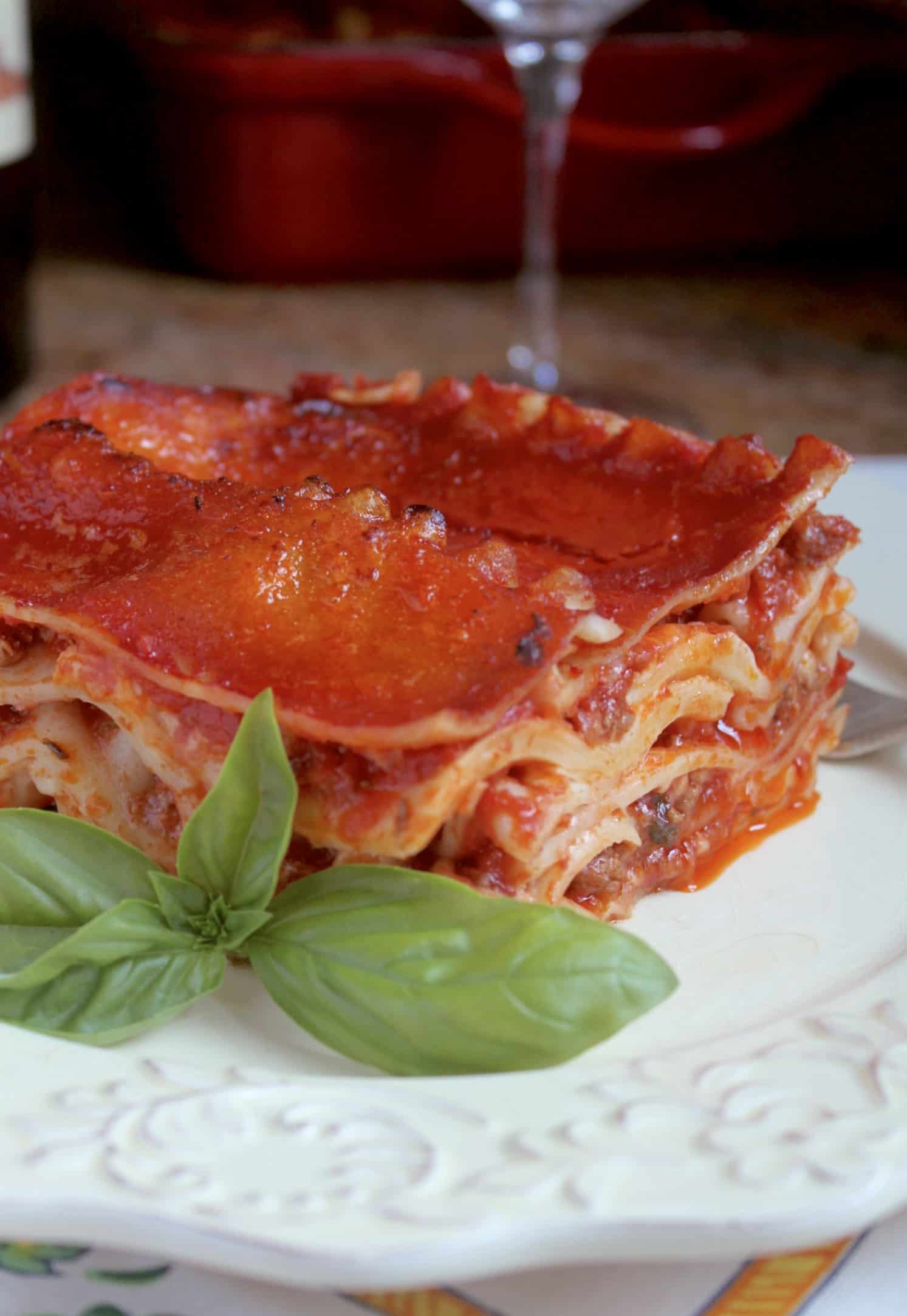
After 9 years of sharing Italian recipes, I’m finally posting my lasagna recipe.
As a Farm Foods affiliate and Amazon Associate I earn from qualifying purchases. I received 2 cans of San Marzano DOP tomatoes from the I 🖤 San Marzano DOP campaign, however, I have been promoting them since I started my website simply because they are the best quality tomatoes available in a can.

The reason I decided to give you my family’s traditional Italian lasagna recipe is because of what I’ve seen being posted online. America is in serious need of a decent lasagna recipe without cottage cheese, sugar and sour cream! Honestly, I have no words for some of the recipes. They may include lasagna noodles, but the end result is not what I would consider “lasagna”.
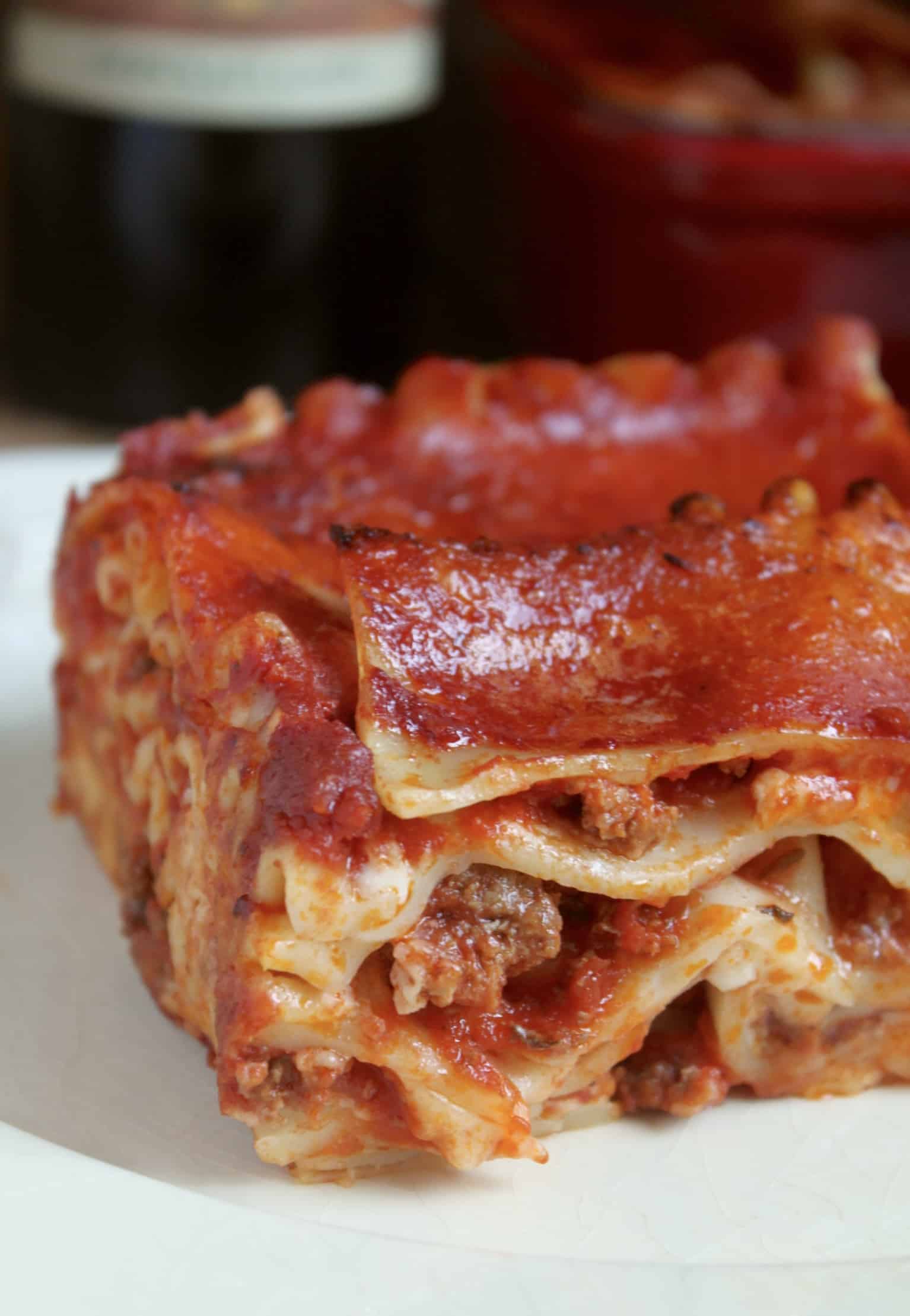
Don’t get me wrong, there are so many ways to make a classic Italian lasagna, but I think people have run too far with the changes, and it no longer resembles anything remotely Italian-style (like so many American-Italian dishes). Even within Italy there are so many variations (more to come)! While lasagna Bolognese is probably the most famous and original, this is a Southern Italian recipe.
So if you want a lasagna that’s packed with a laundry list of ingredients including: sausage (with ground beef), ricotta (or worse yet, cottage cheese), sour cream, sugar, Italian seasoning, and other crazy ingredients that you’d never find in authentic Italian lasagna, you better find another recipe, because this is not it.
Try this zucchini lasagna if you have lots of summer zucchini!
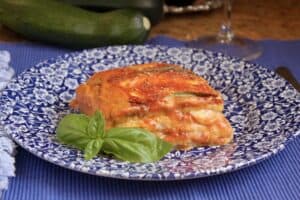
What are the Basic Ingredients for Lasagna?
Despite what you might think, there are not very many ingredients in a basic Italian lasagna. The lasagna noodles, a meat sauce, bechamel sauce, and mozzarella are practically all you need. I don’t understand the need to complicate recipes. When you use really good quality ingredients, few are required, and it will taste better than any 40 ingredient recipe you can throw at me!
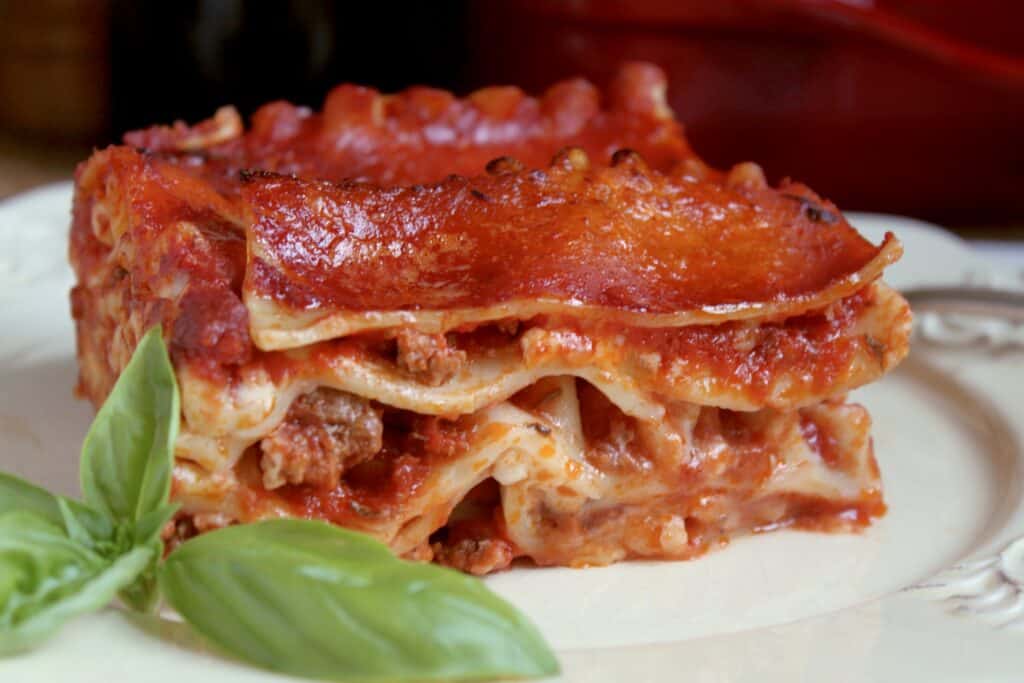
Here’s how to get great quality meat delivered to your door: Farm Foods! I tried their ground beef recently and am so pleased with it! All their meat comes from US farms, is grass fed and no antibiotics or growth hormones are used on their cows. You can taste the difference. They also have top quality pork, lamb, chicken and even seafood! Get free shipping on orders of $99+.
How Long Does it Take to Make a Lasagna from Scratch?
If you follow my tips, which includes making parts of the lasagna ahead of time, you can assemble a lasagna in about 15 minutes. Baking time is about half an hour to 40 minutes, for a crispier top. If you make your own sauces, and assemble it right after, it will take approximately an hour and a quarter (1 hour for the sauce and 15 minutes to assemble). Trust me, it’s worth it.
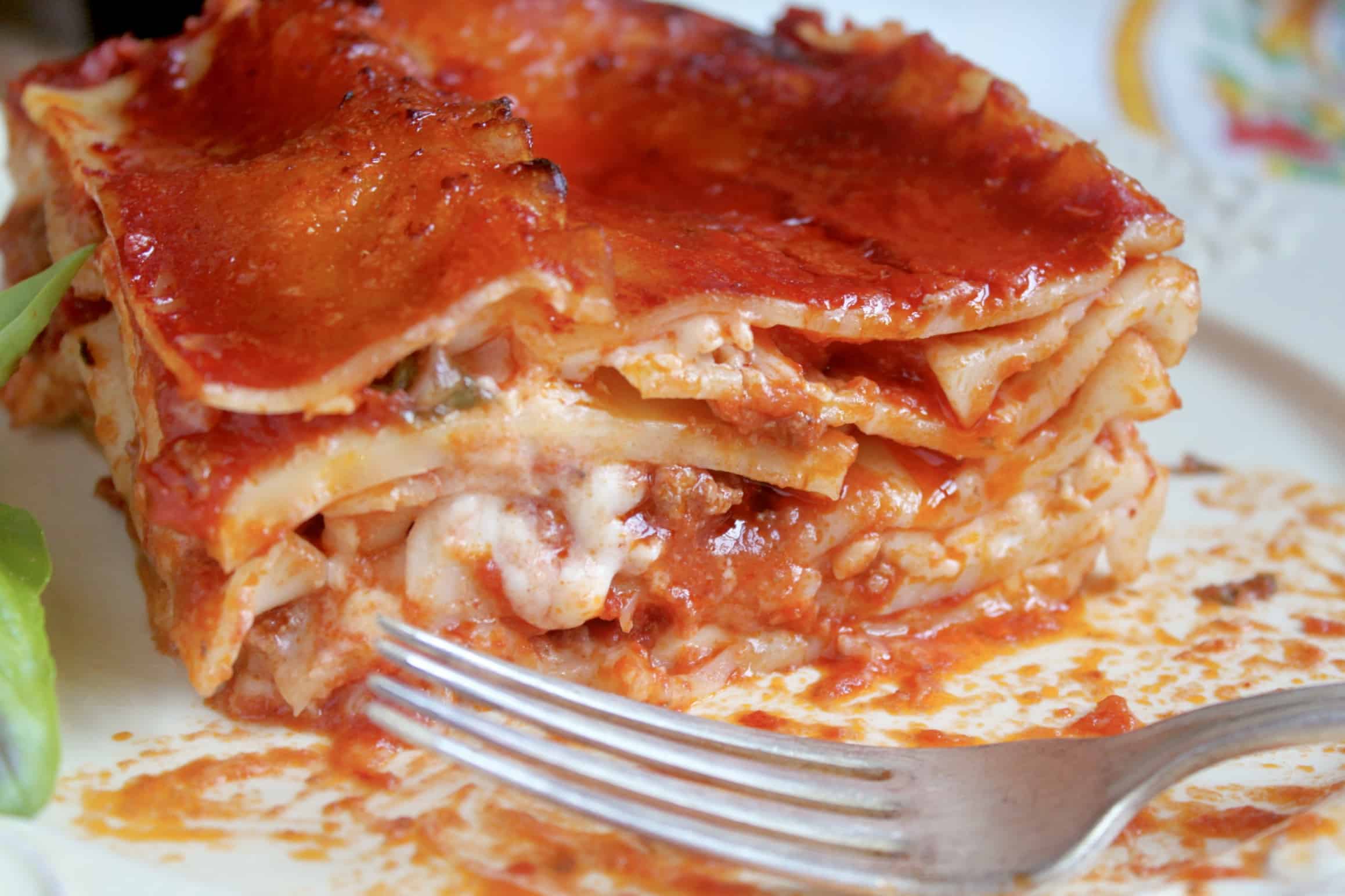
Love the crunchy bits, and corner pieces of lasagna? Then you’ll love this!
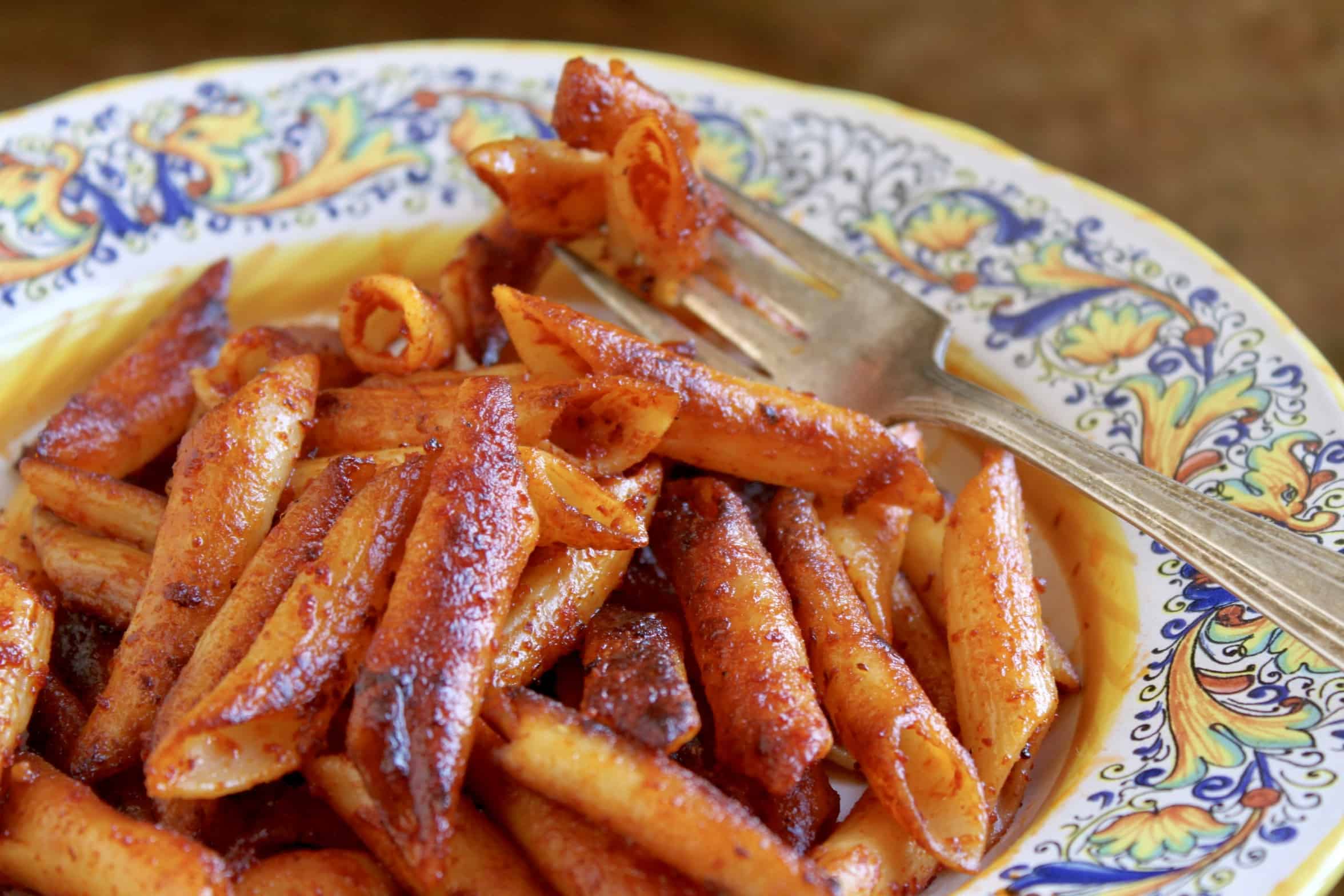
How do you Make Lasagna from Scratch?
Follow my easy, step by step directions below and you’ll see how simple it is to make lasagna from scratch (almost completely, since I’m not making the pasta itself). You can make a traditional Bolognese meat sauce if you like, which includes onion, celery and carrot, for a more authentic lasagna Bolognese, however, this recipe is from Southern Italy and includes mozzarella, which the Northern recipe does not.
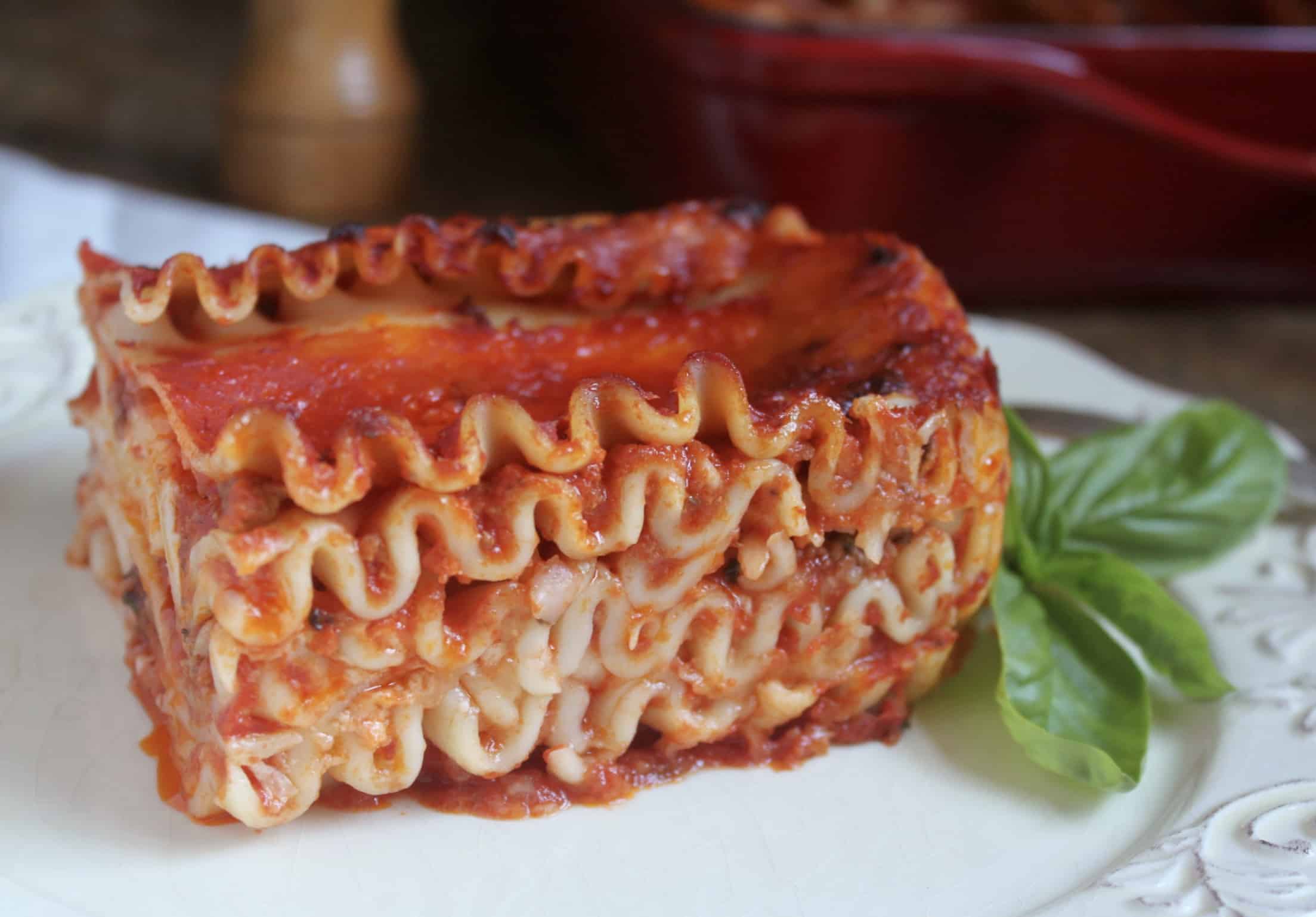
Can you Freeze Lasagna?
Lasagna is one of the best make-ahead dishes to freeze. It freezes incredibly well. You can freeze the entire tray, or cut into pieces and freeze individually, whichever way you prefer.
Why not serve a classic Italian dessert with your lasagna?
This is the recipe for the original and authentic tiramisù from Treviso, Italy!
Looking for easy recipes to add to your menu repertoire? Check out all these great canned tomato recipes!
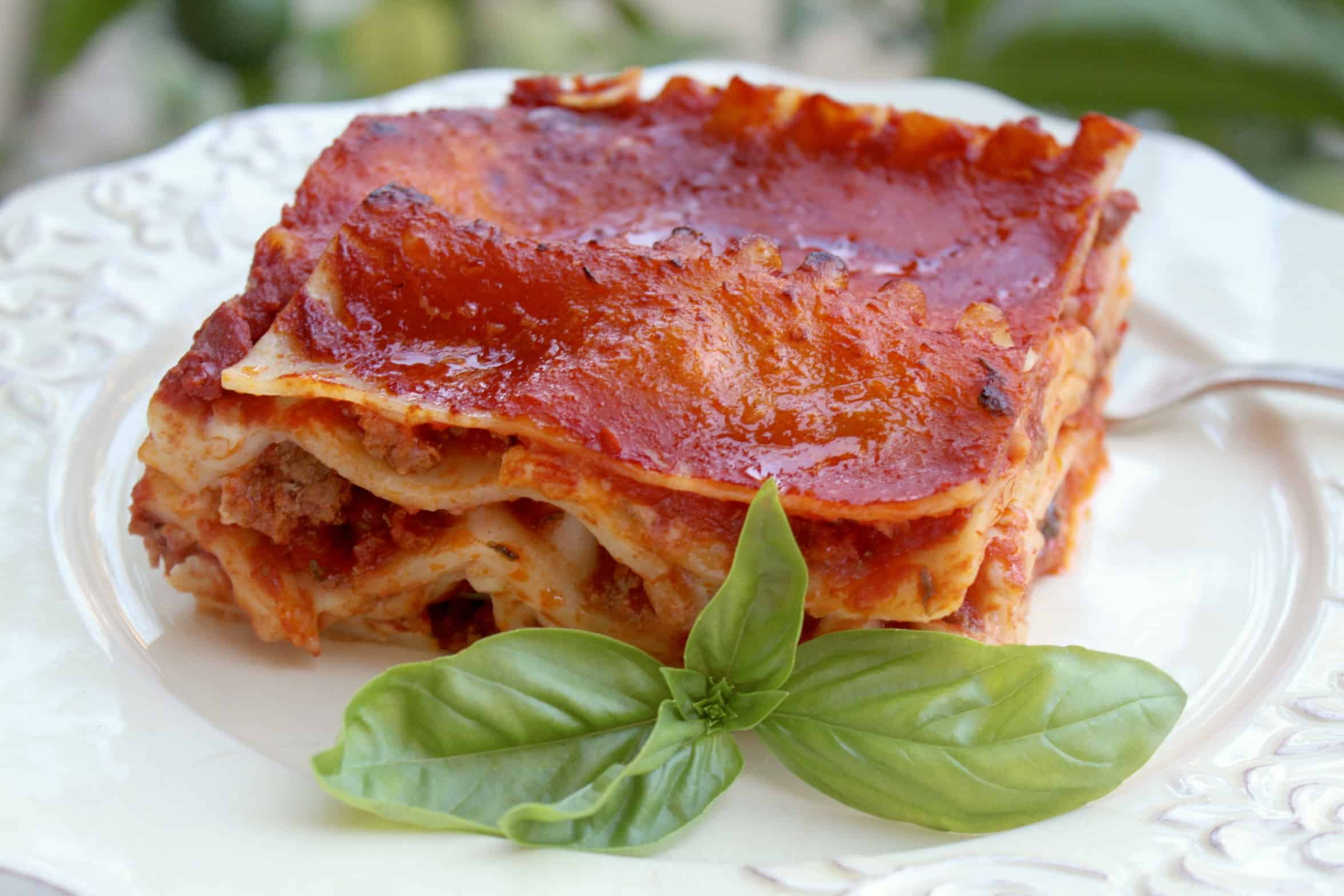
Lasagna (Traditional Italian Recipe)
by Christina Conte (a family recipe) Makes a 9″ x 13″ tray (serves 12)
FULL PRINTABLE RECIPE BELOW
Meat Sauce Ingredients
- extra virgin olive oil (good quality like Partanna)
- garlic
- fresh parsley
- ground beef
- Italian tomato purée (passata) or whole tomatoes, puréed (the very best choice is San Marzano dell’Agro Sarnese-Nocerino, DOP)
- Kosher or sea salt
- pepper
- fresh basil
Bechamel Sauce Ingredients
- butter
- flour
- milk, whole is best
- dash of nutmeg
- Kosher or sea salt
- white pepper
Other Ingredients
- 1 lb lasagna noodles or sheets (use pasta from Italy, or homemade, for best results)
- mozzarella cheese
- Parmigiano Reggiano or Pecorino Romano cheese to sprinkle on top
TIP: if you can, make the meat sauce and bechamel sauce ahead of time (up to a day before).
Oven temperature: 400˚ F (200˚ C)
9″ x 13″ ovenproof pan (preferably freezer-proof, too)
1. Make the Meat Sauce
In a large, heavy pot, put the olive oil, garlic and parsley over medium high heat. When the garlic begins to brown, increase the heat and add the ground beef. Break up the beef, but keep it rather chunky. Sprinkle with about 1/2 tsp of salt.
When the beef is beginning to dry up, add the tomatoes and stir well. Add more salt, then lower the heat and allow to simmer for about an hour, stirring from time to time. Taste for salt and add pepper.
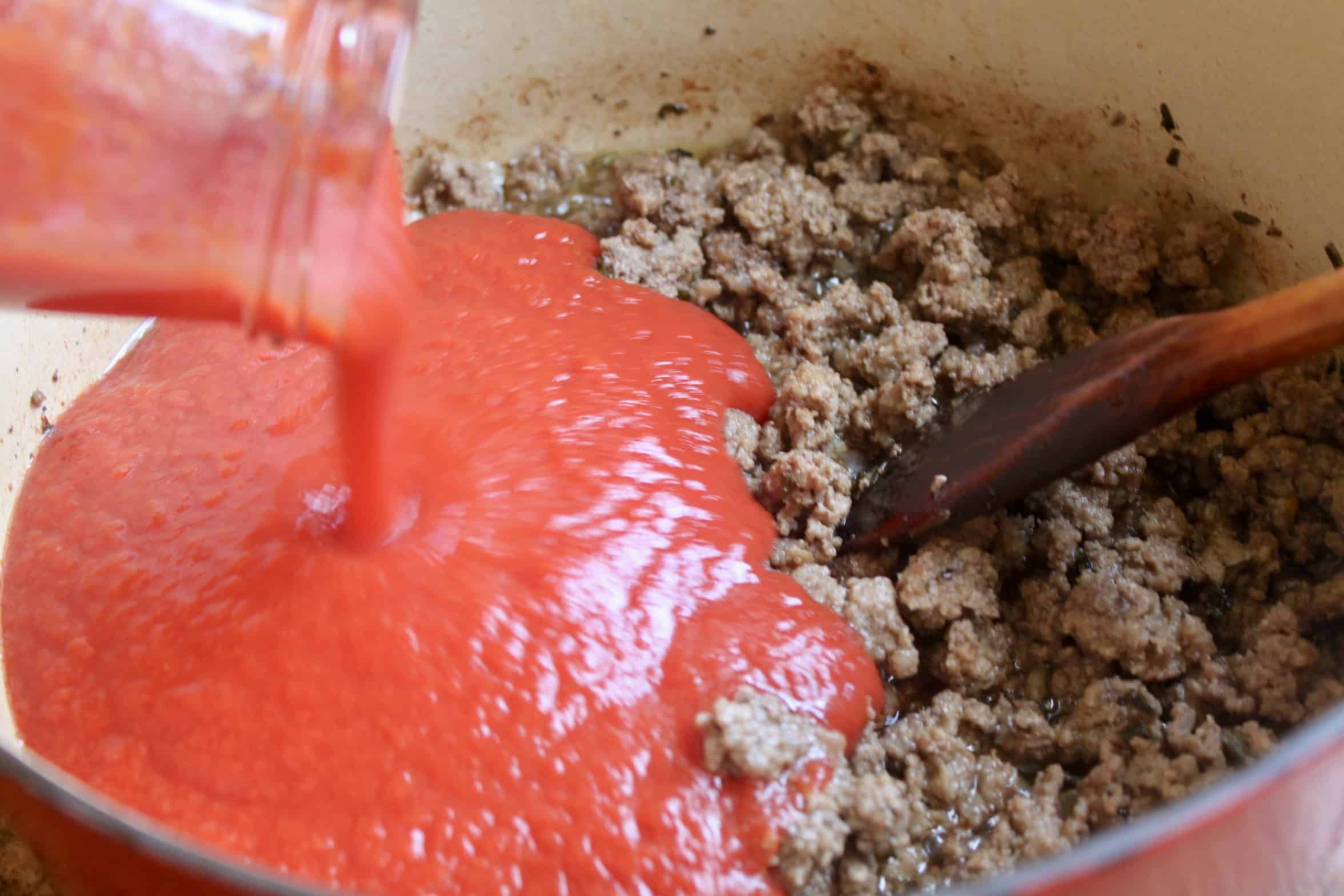
When the sauce is ready, add the torn basil leaves. Remove about a cup (8 oz) of plain sauce (leave the ground beef in the pot and save for the top layer). If you make my quick Italian tomato sauce and happen to have some made, you can use that instead. Refrigerate the meat sauce when cool, or set aside if using right away.
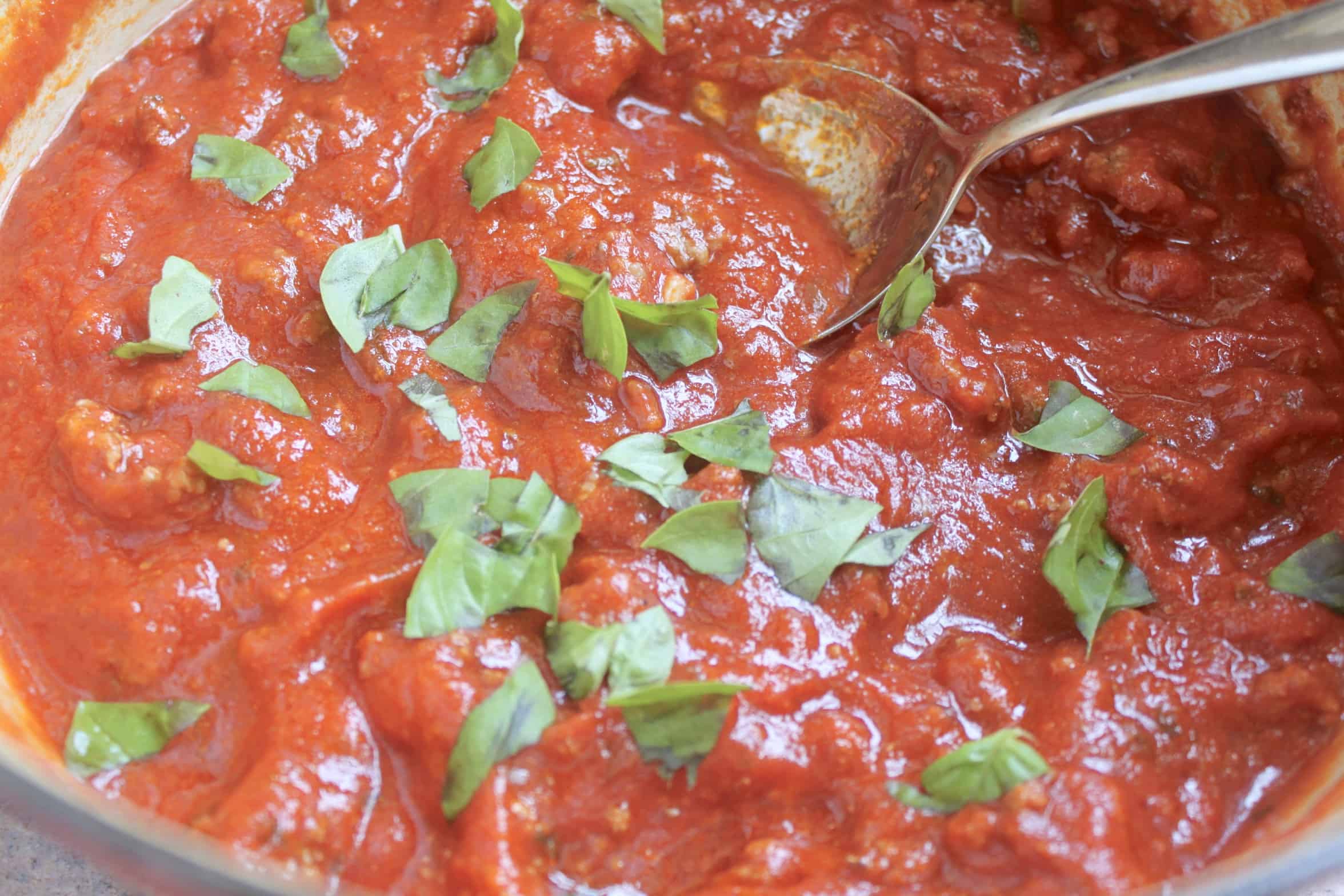
2. Make the Bechamel Sauce (while the sauce is simmering).
Melt the butter in a medium pot then add the flour. Keep stirring to cook the flour for at least 5 minutes, but don’t let it brown. Pour in a little of the milk, and stir quickly to incorporate.
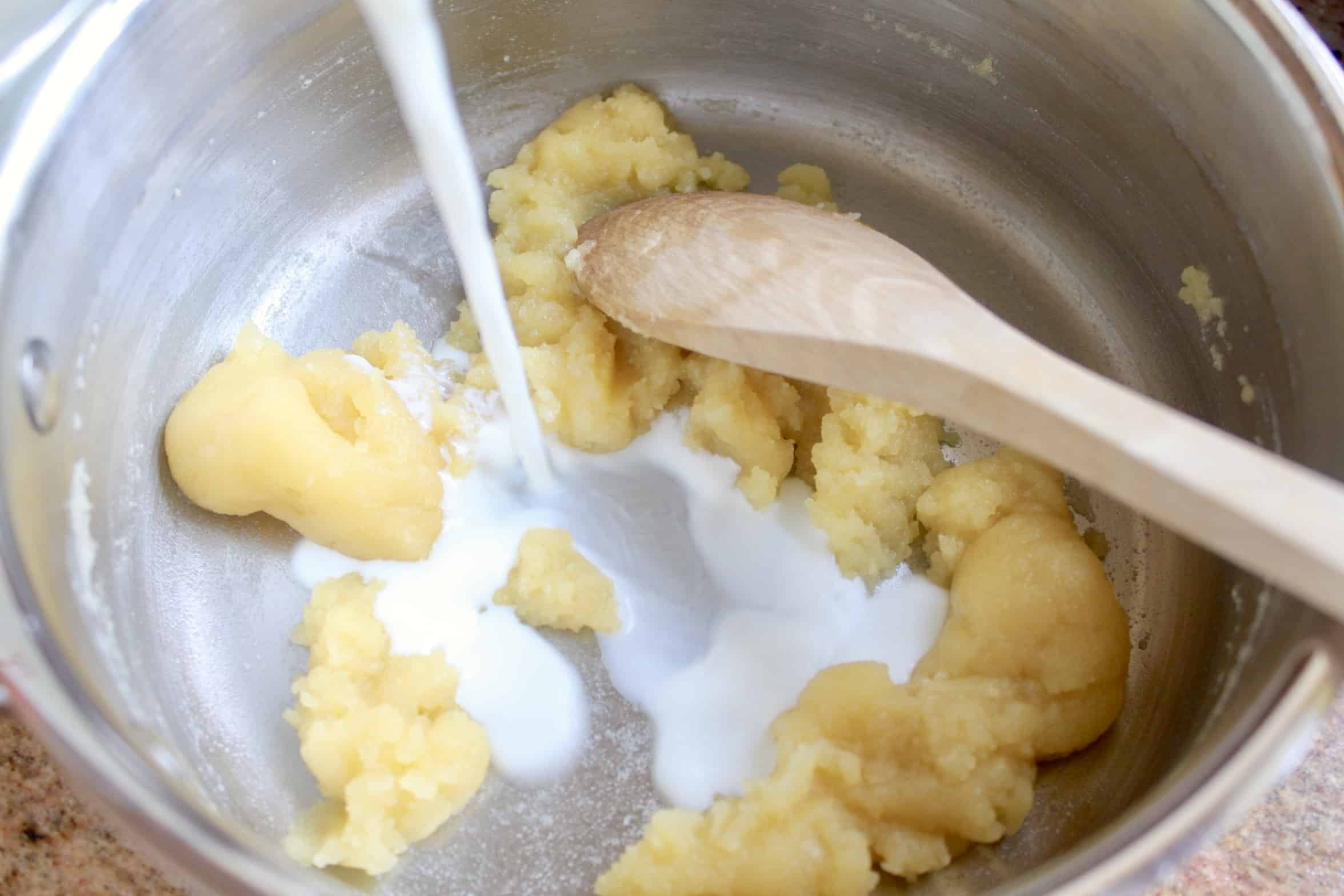
Continue stirring and adding milk a little at a time. Once all the milk is mixed into the flour and butter mixture, add more.
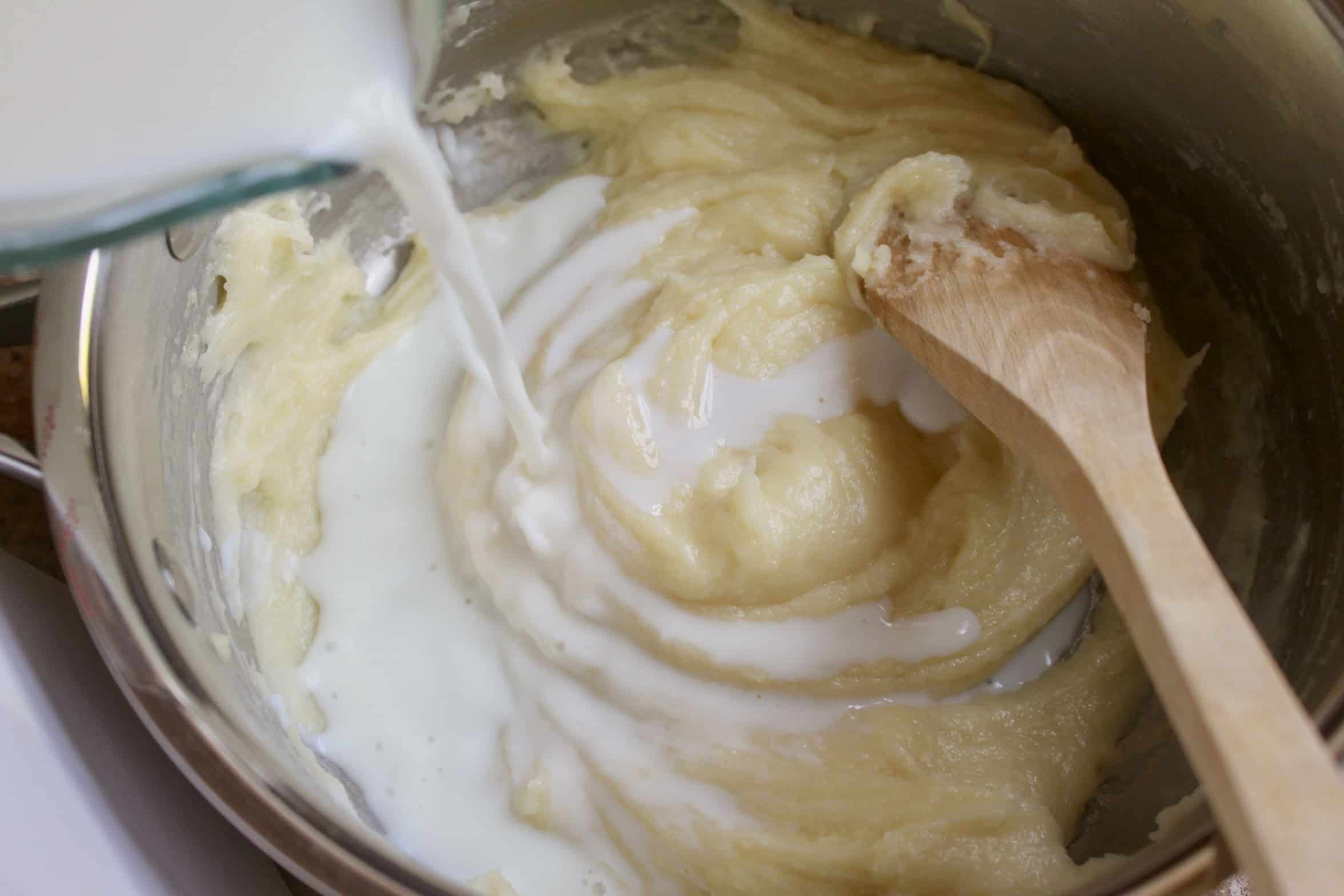
Add more milk each time as the composition gets more sauce-like.
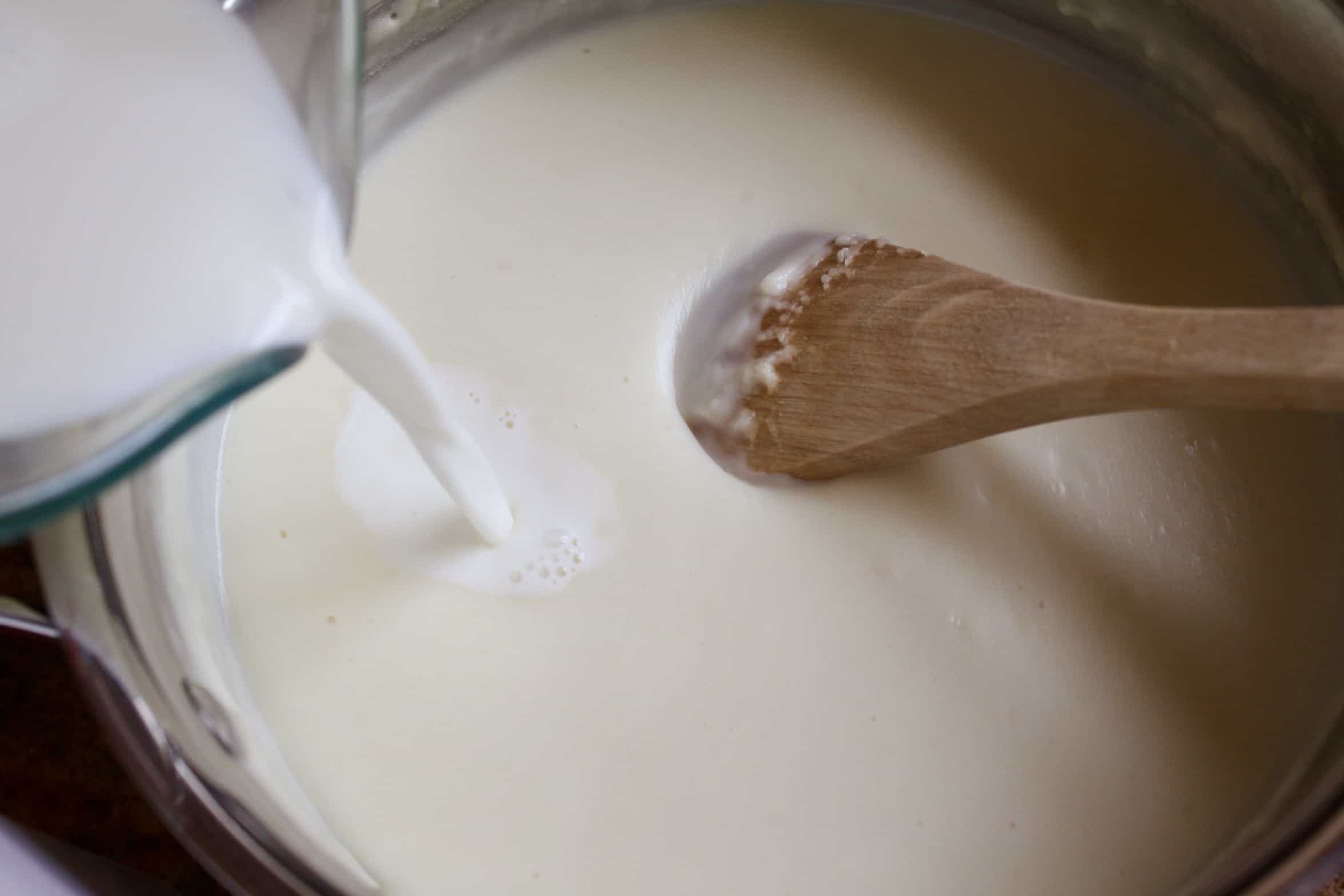
When all the milk has been added, season with about 1/2 tsp salt, a dash of nutmeg and about 1/4 tsp white pepper. Taste and adjust as needed. Keep a lid on the sauce if not using right away.
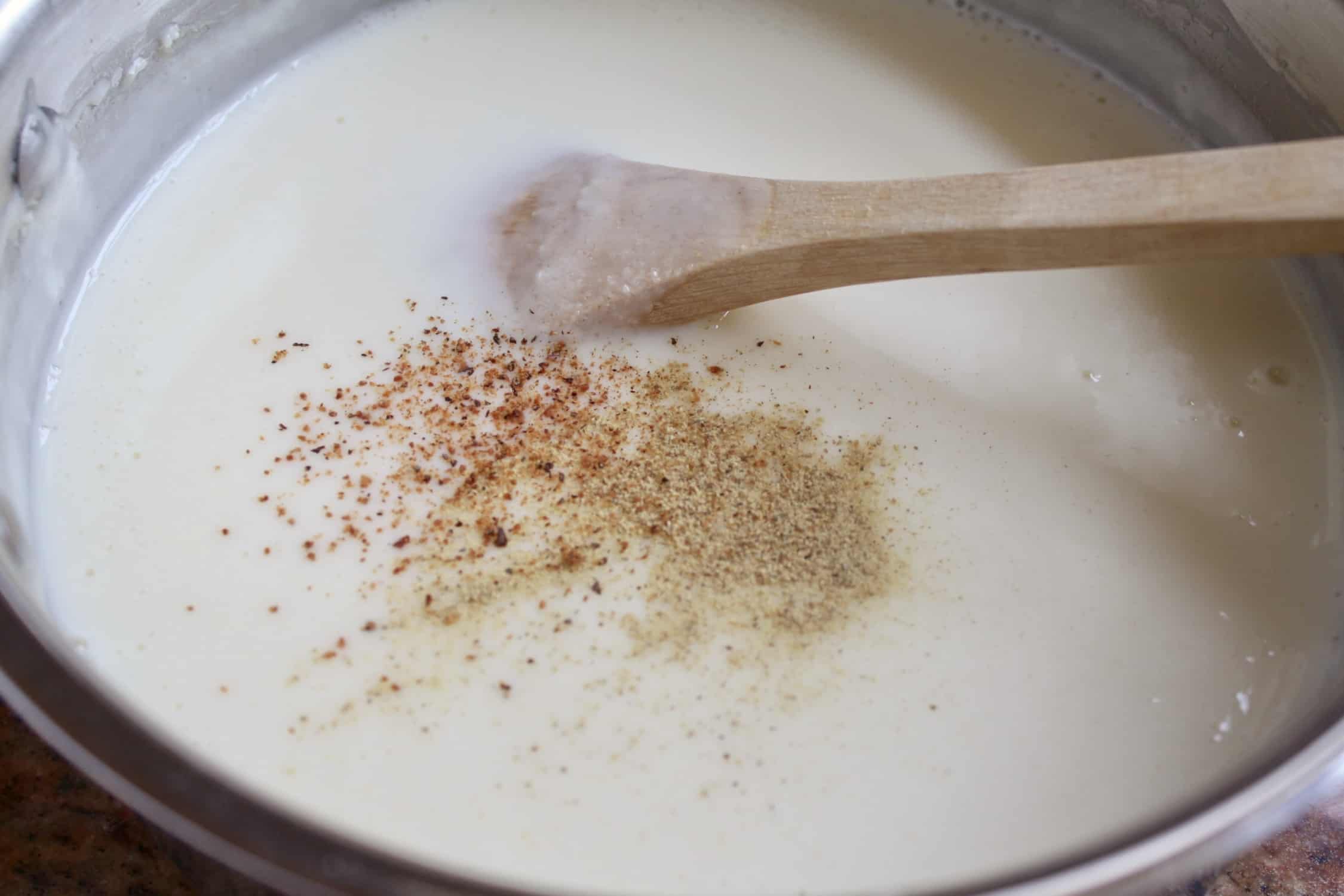
3. Cook the Noodles (Skip this step if using no-cook lasagna noodles).
Boil the noodles in plenty of salted water, making sure to keep moving them so they don’t stick together. Remove the noodles from the heat 5 minutes BEFORE the instructed time on the box. Reserve about 2 cups of the pasta water. Drain most of the water and then fill the pot with cold water just to cover the noodles. This will stop the pasta from cooking further.
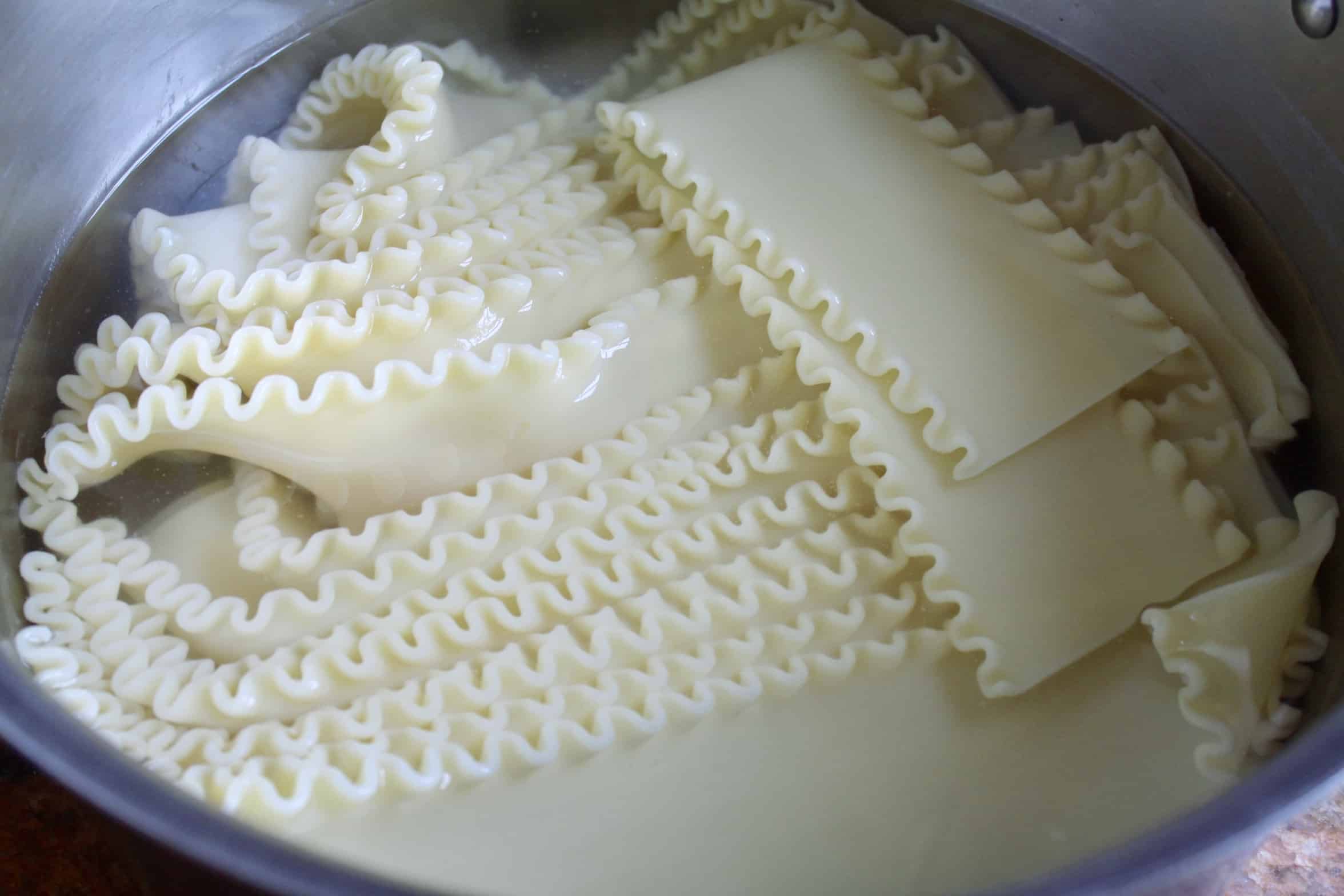
4. Assemble the Lasagna
Put a thin layer of sauce (no meat) on the very bottom of the pan.
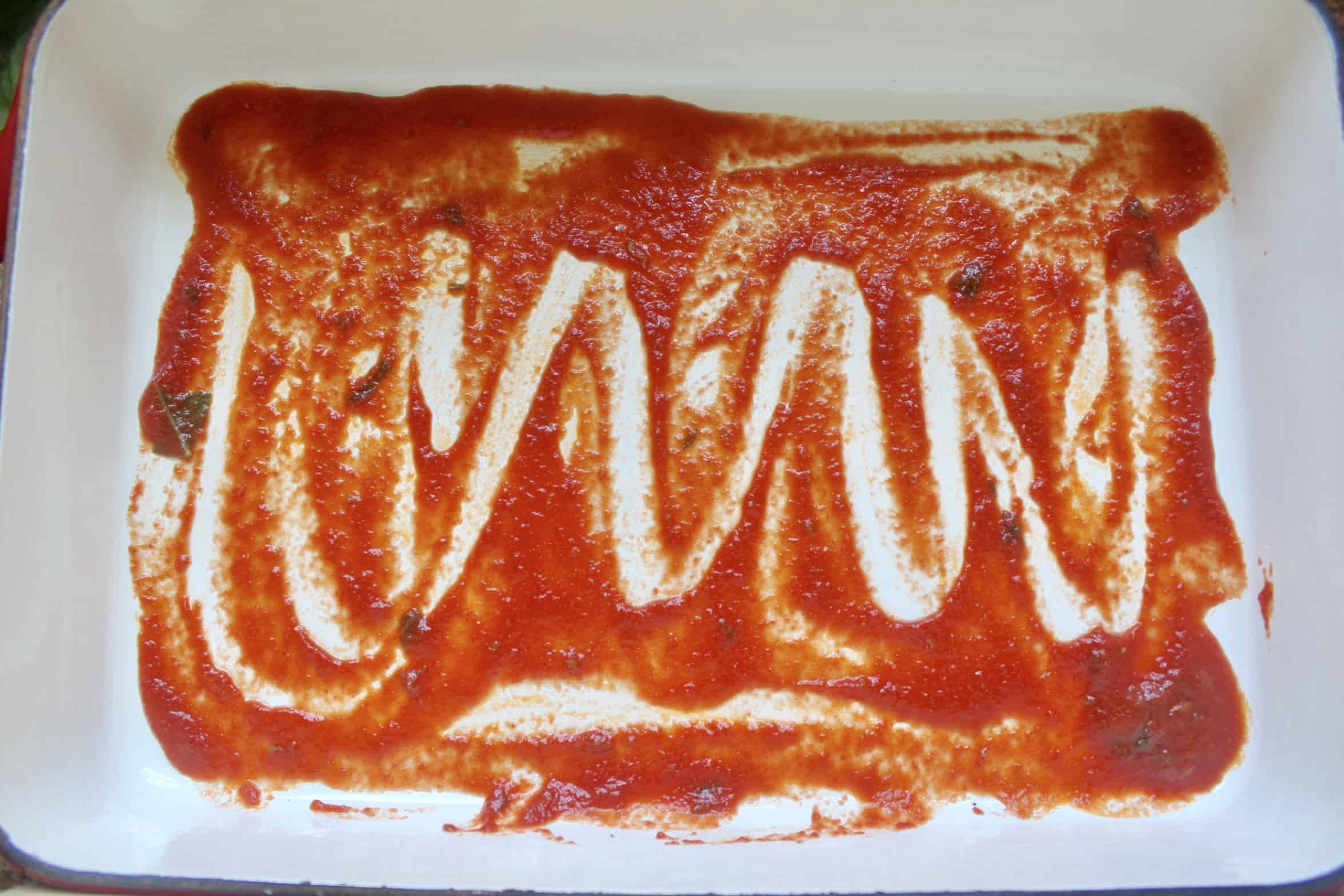
Add three pieces of lasagna lengthwise, then top generously with a quarter of the bechamel sauce.
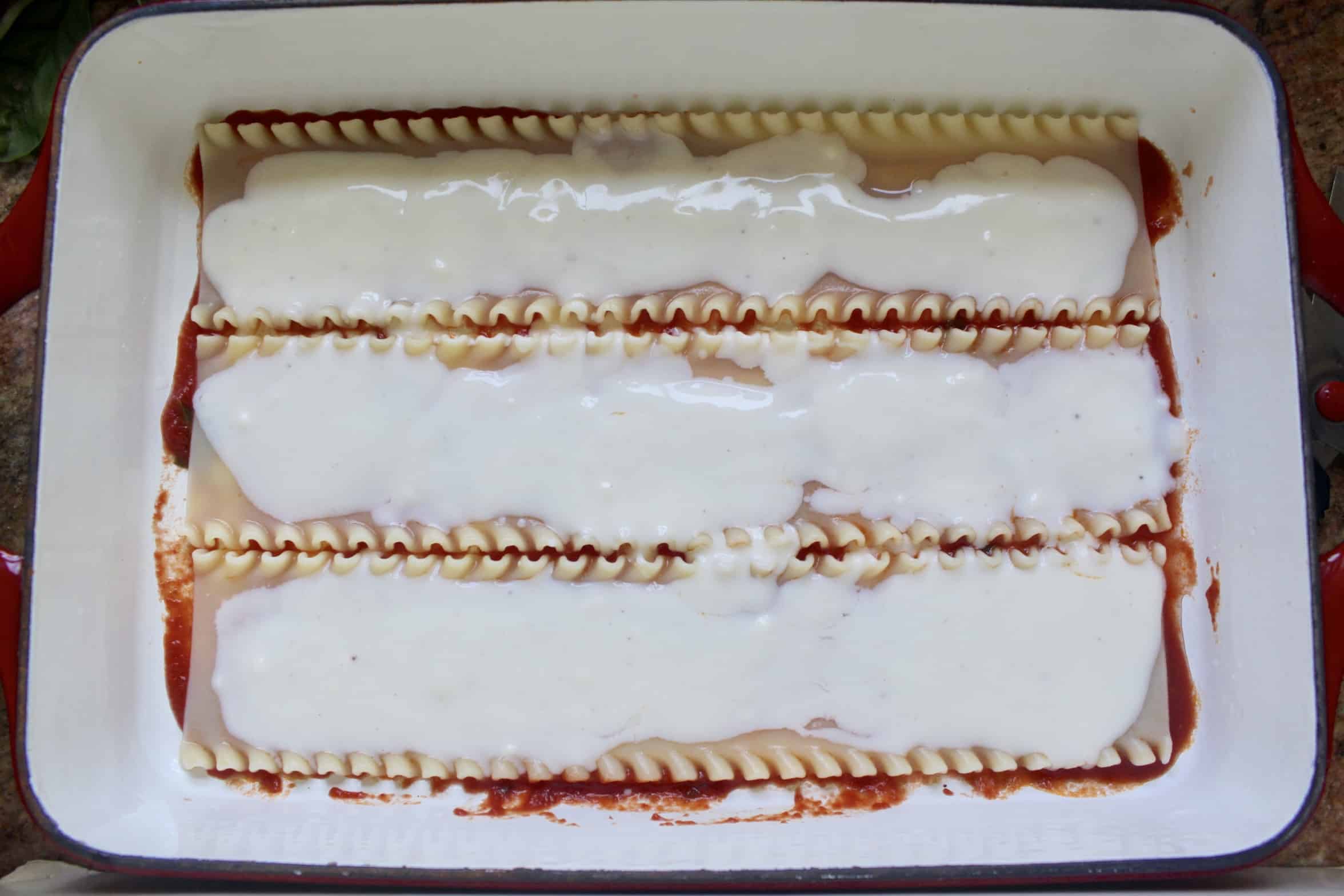
Next, dollop on the meat sauce, but don’t add so much that the lasagna will only be sauce at the end.
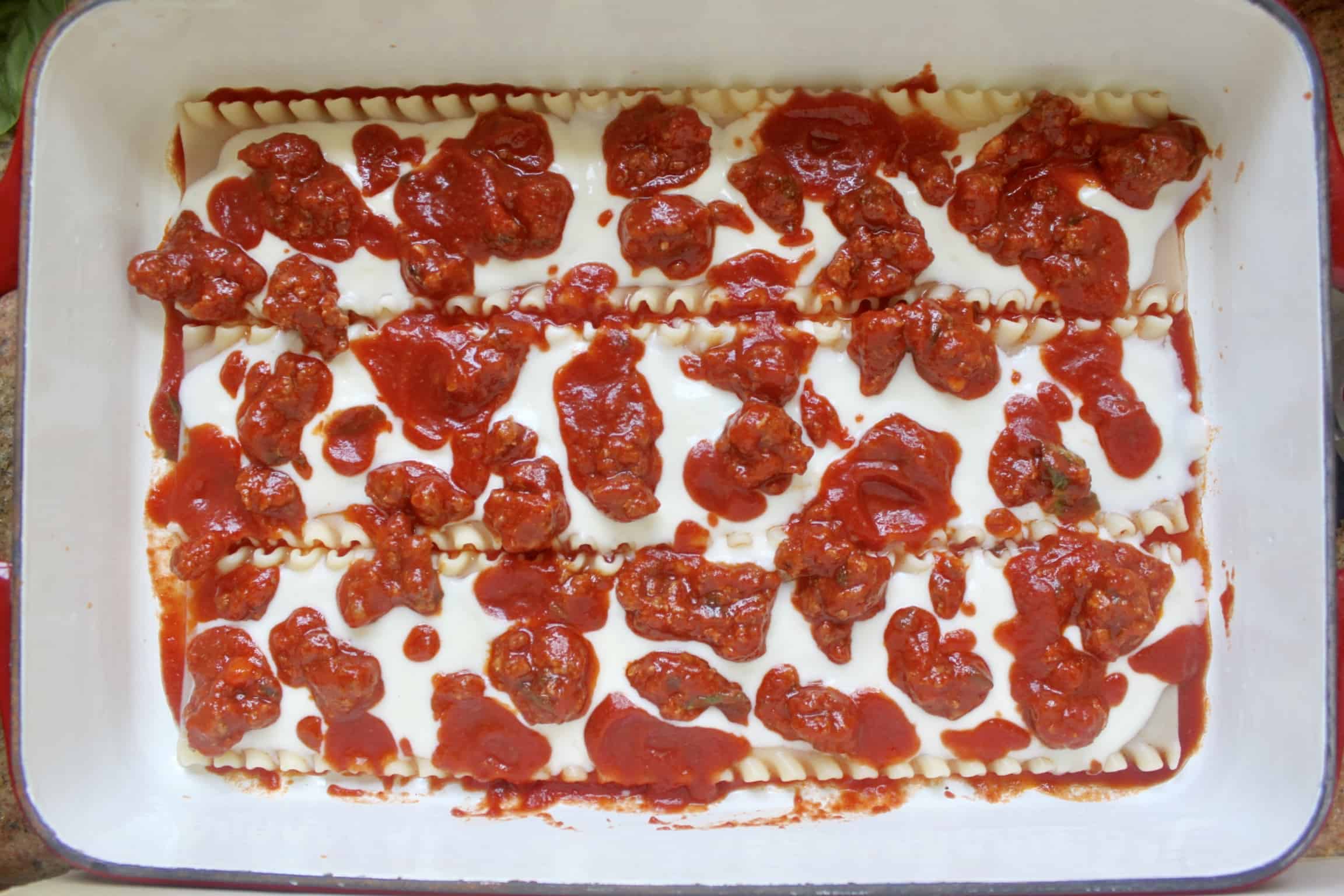
Sprinkle on about a quarter of the mozzarella.
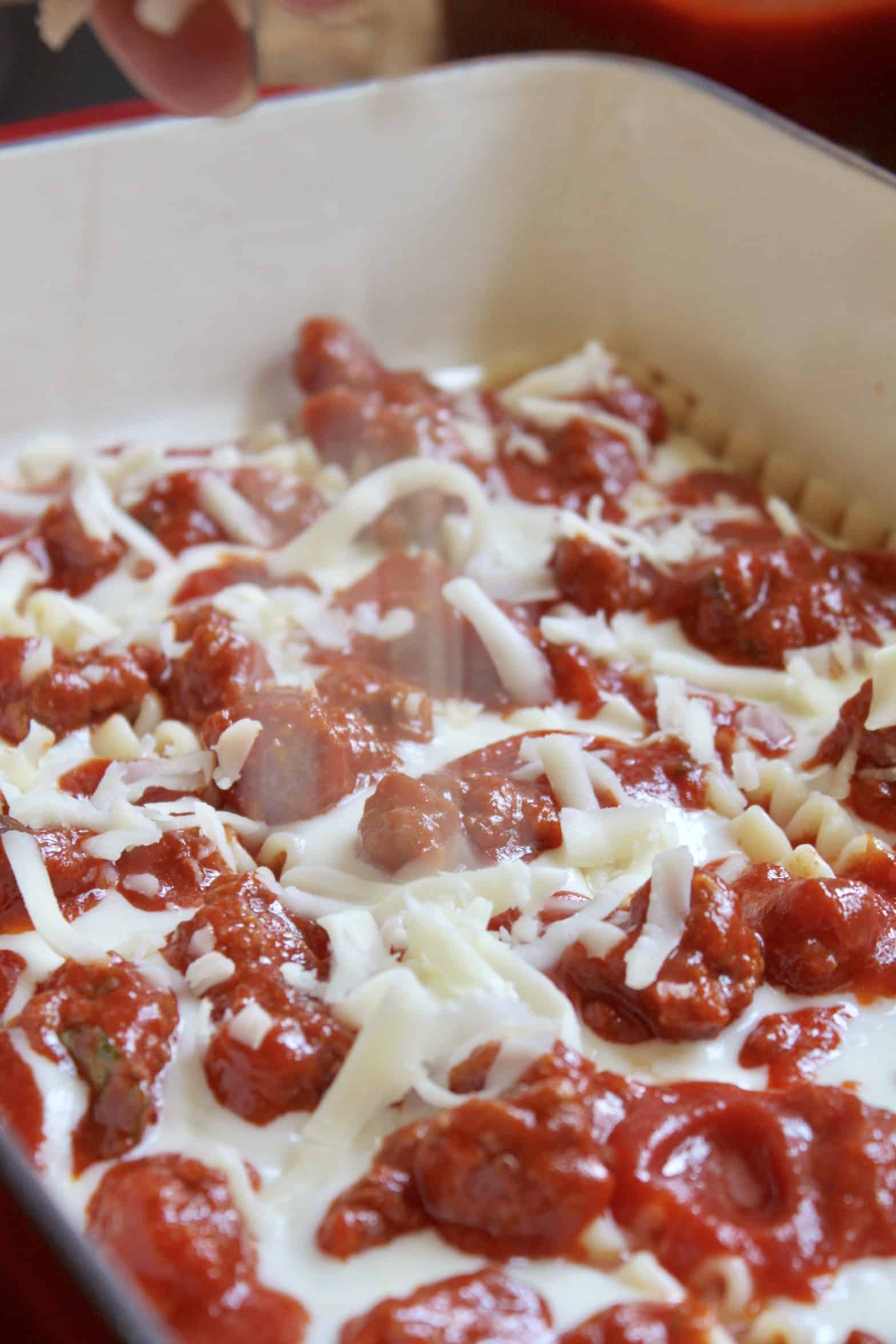
Then top with more lasagna sheets, however, this time, cut them to 9″ strips so that you can place them in the opposite direction. This gives the lasagna structure so that it can hold together when cut. Cut the pieces so that it covers the bottom layer without leaving too much space.
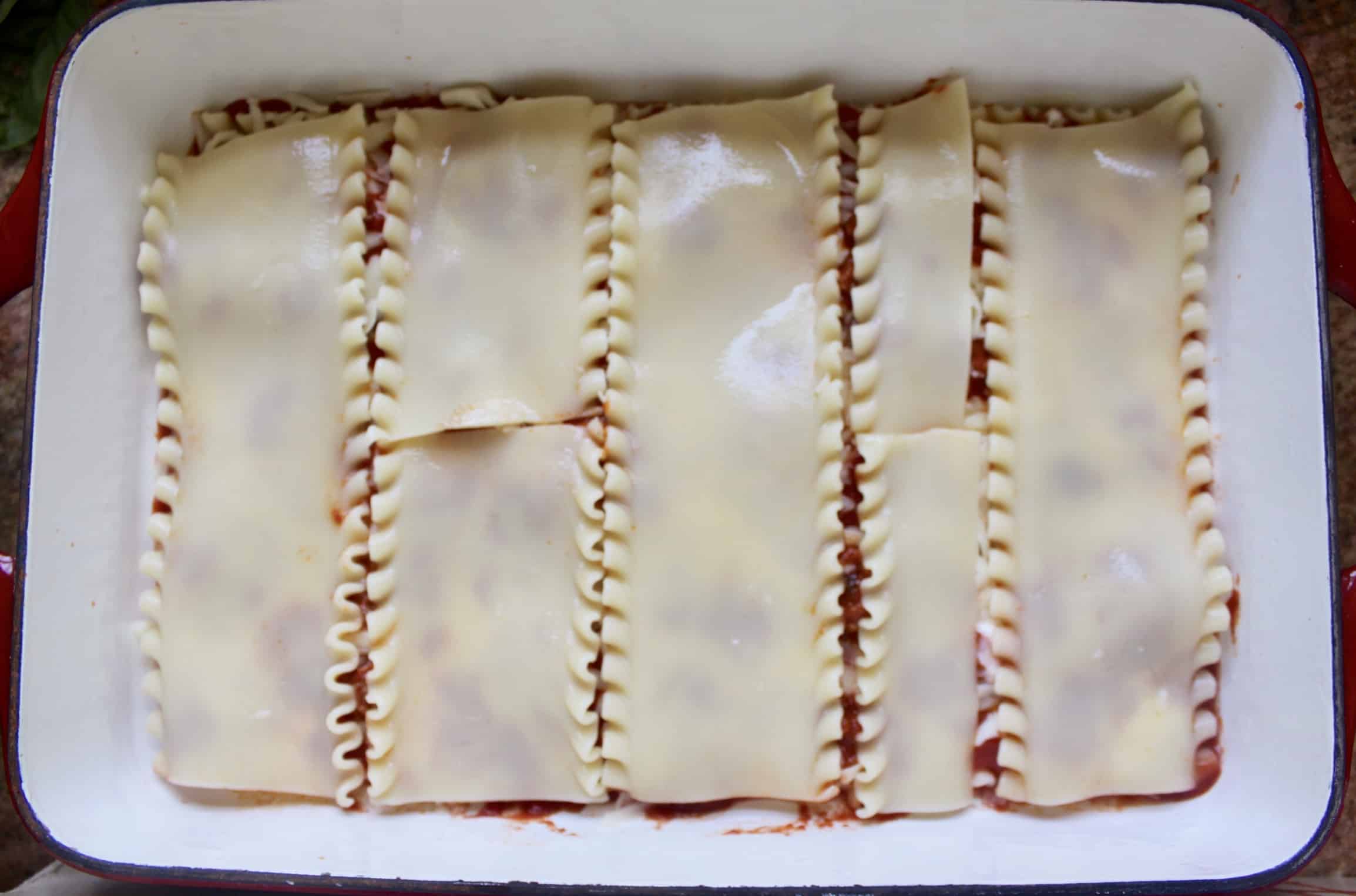
Repeat with the bechamel, meat sauce and mozzarella another three times so that there are 5 layers of pasta and 4 layers of filling.
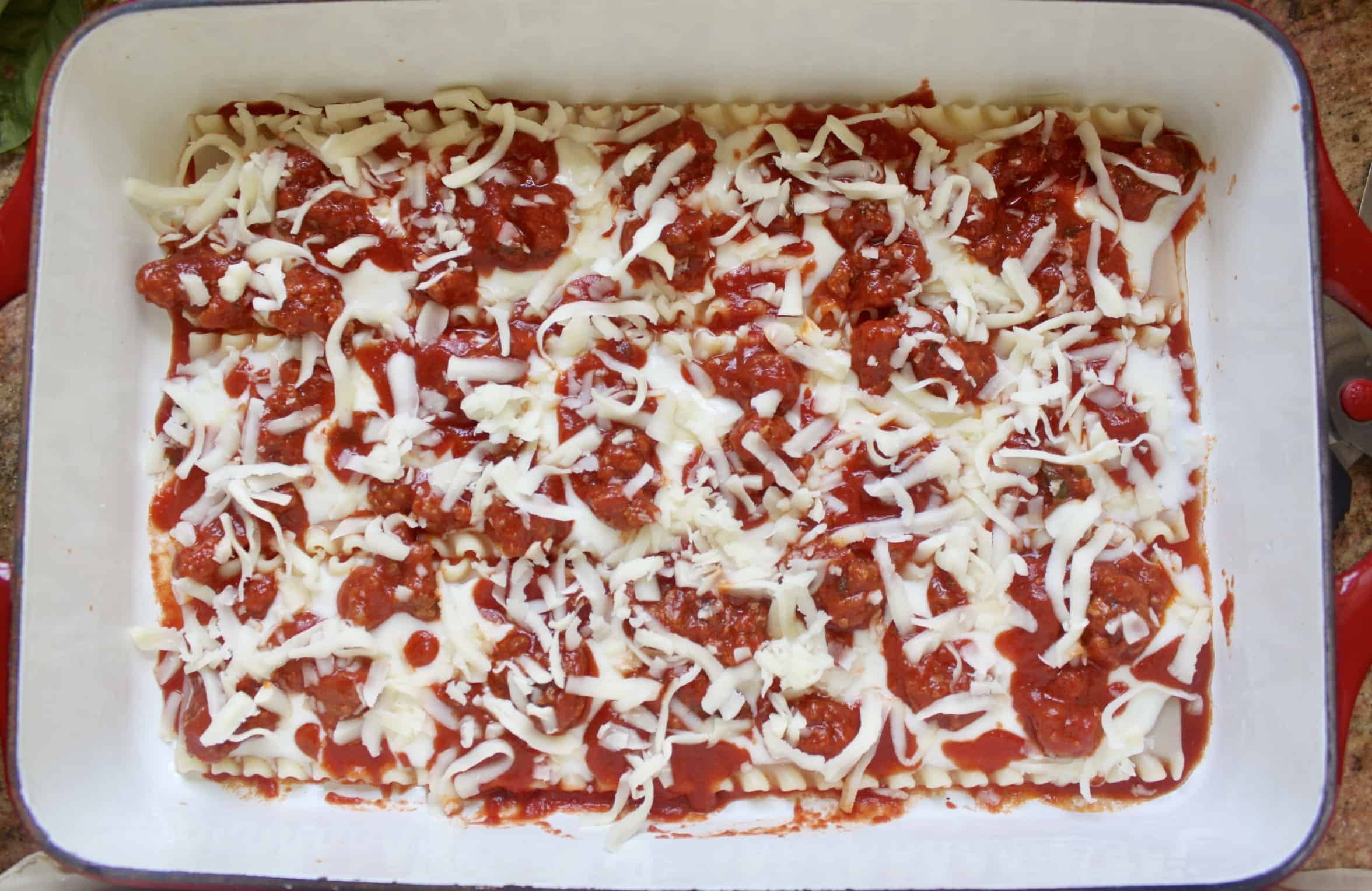
You may or may not have leftover meat sauce, depending on how much sauce you added. However, if you do use it all, take some of the reserved pasta water (about a cup) and rinse the pot with it and add it to the lasagna before the top layer goes on.
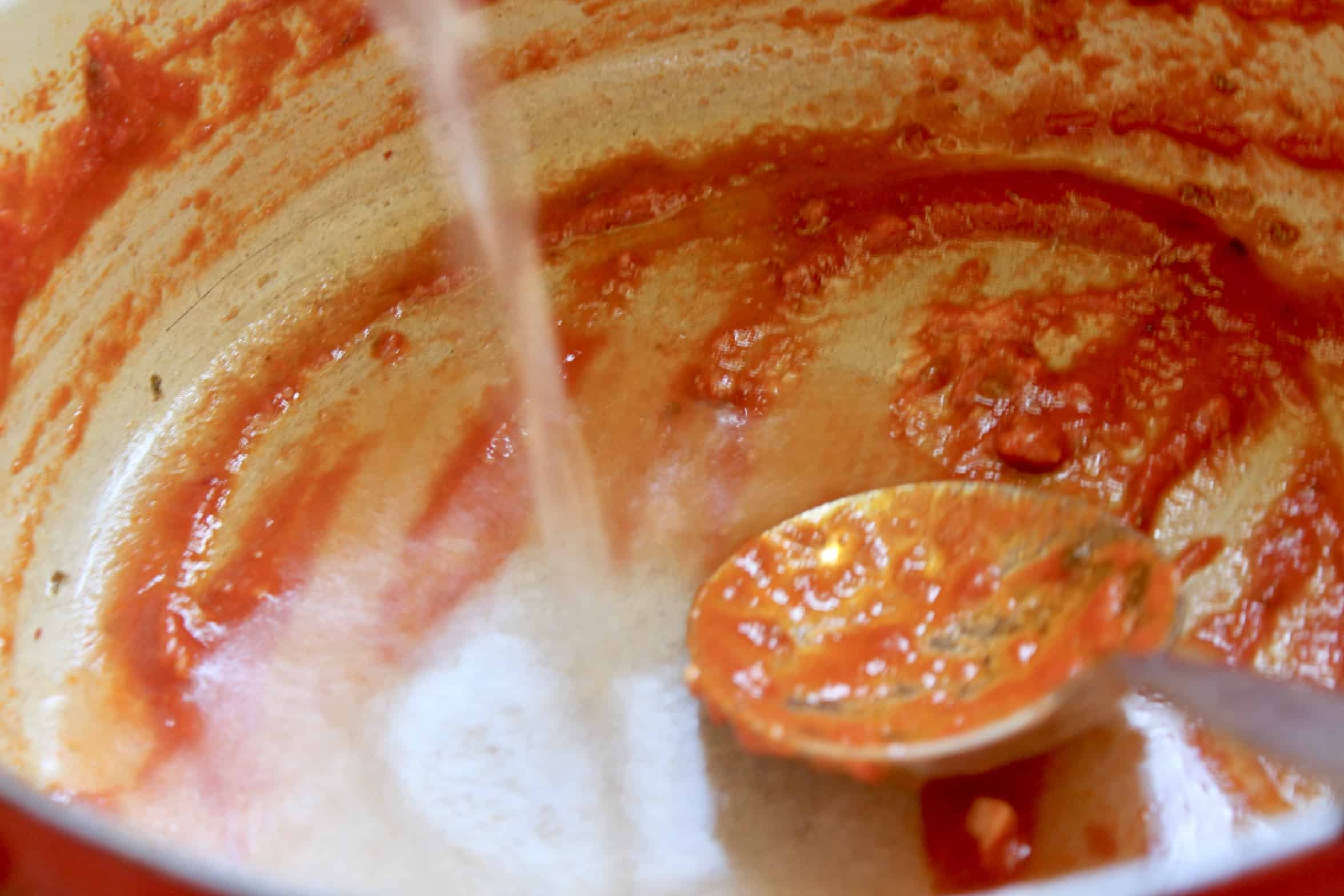
Alternatively, just pour the water directly onto the lasagna. We didn’t fully cook the pasta, so it will absorb more liquid as it cooks in the oven.
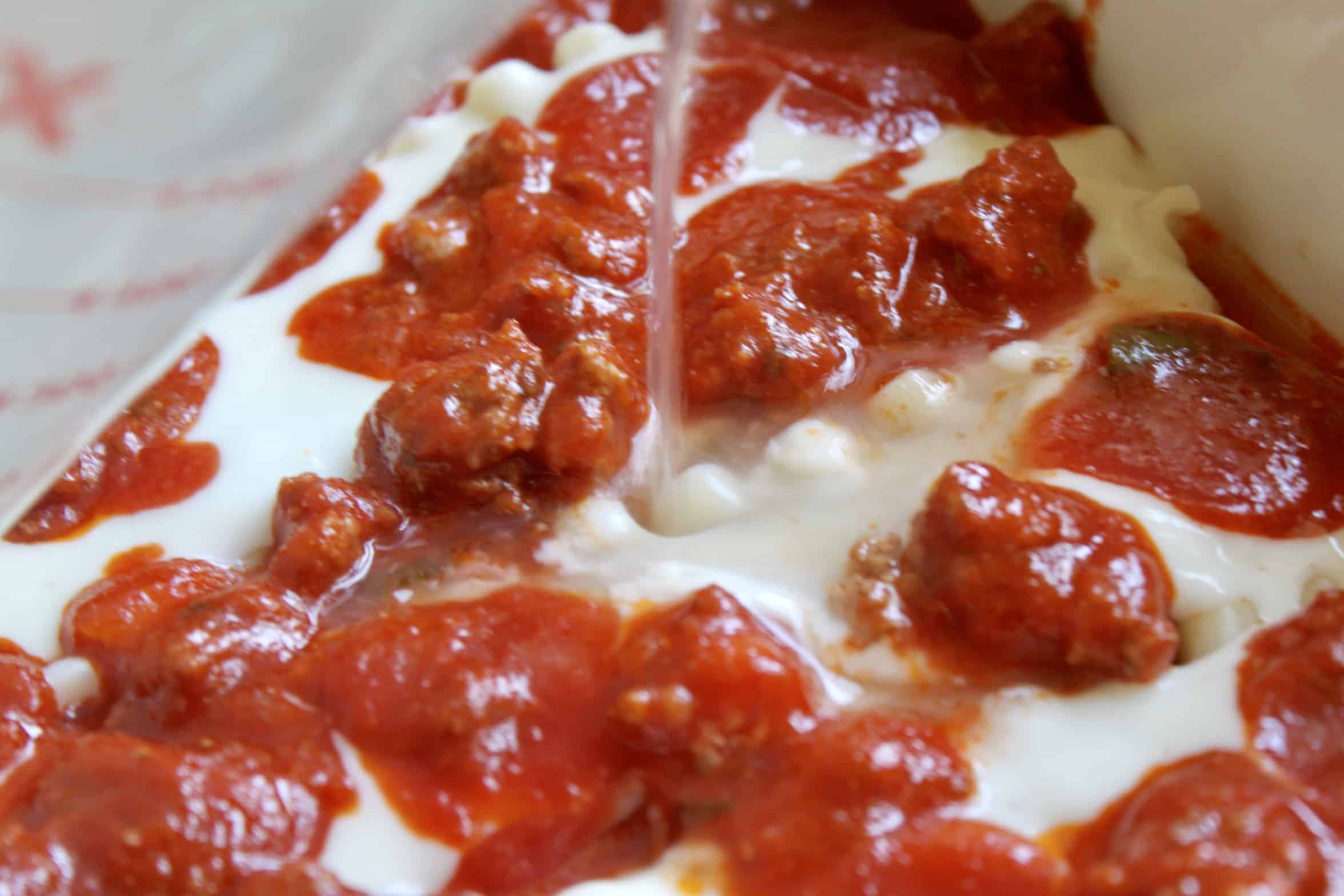
The top of the lasagna will have the strips lengthwise, so I usually pull four (I overlap the top layer) of the best looking pieces (which aren’t broken or cut) and save them for the top. Spread some of the tomato sauce without meat pieces for the very top layer.
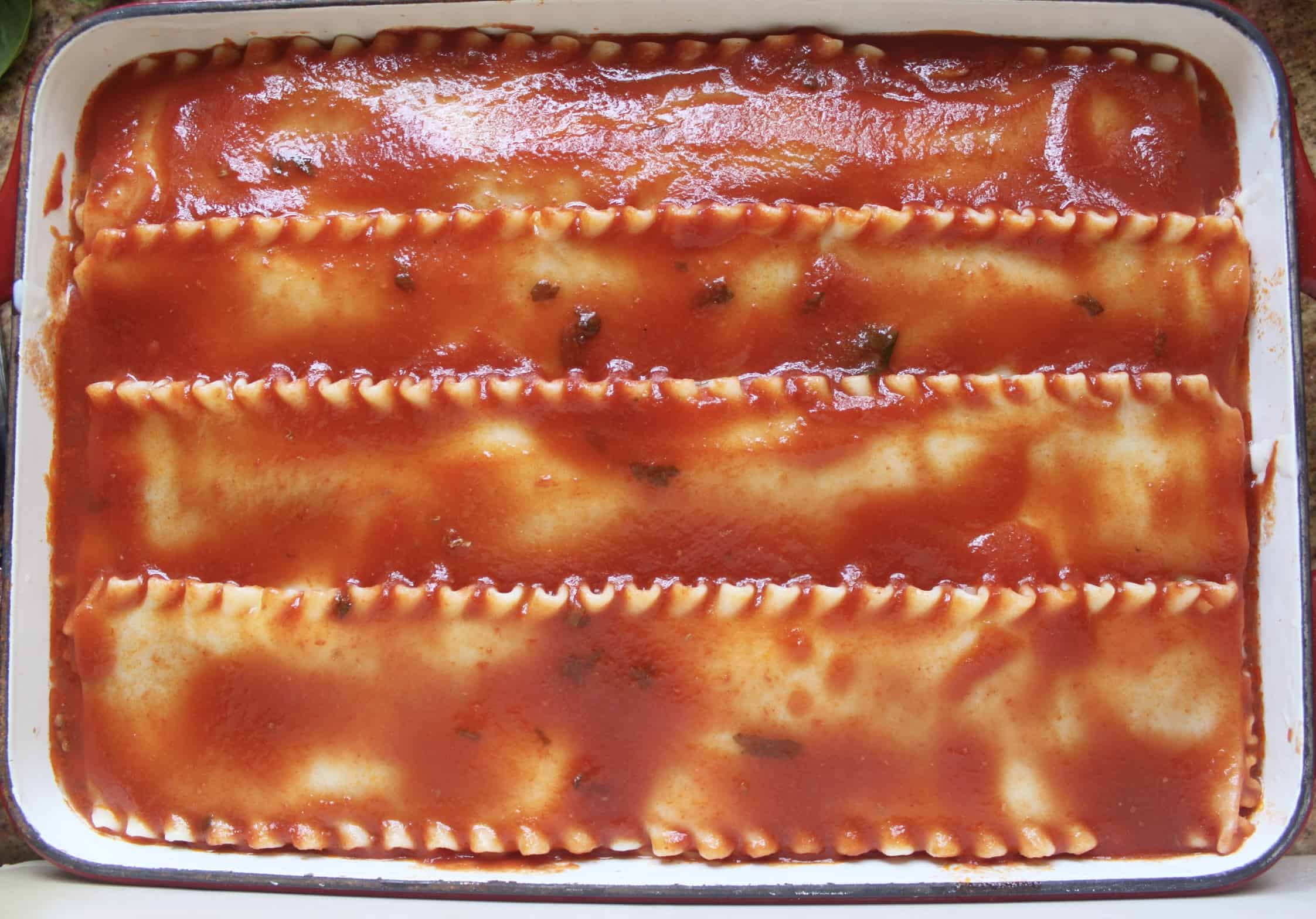
Lastly, sprinkle some grated Parmesan on top of the lasagna before baking.
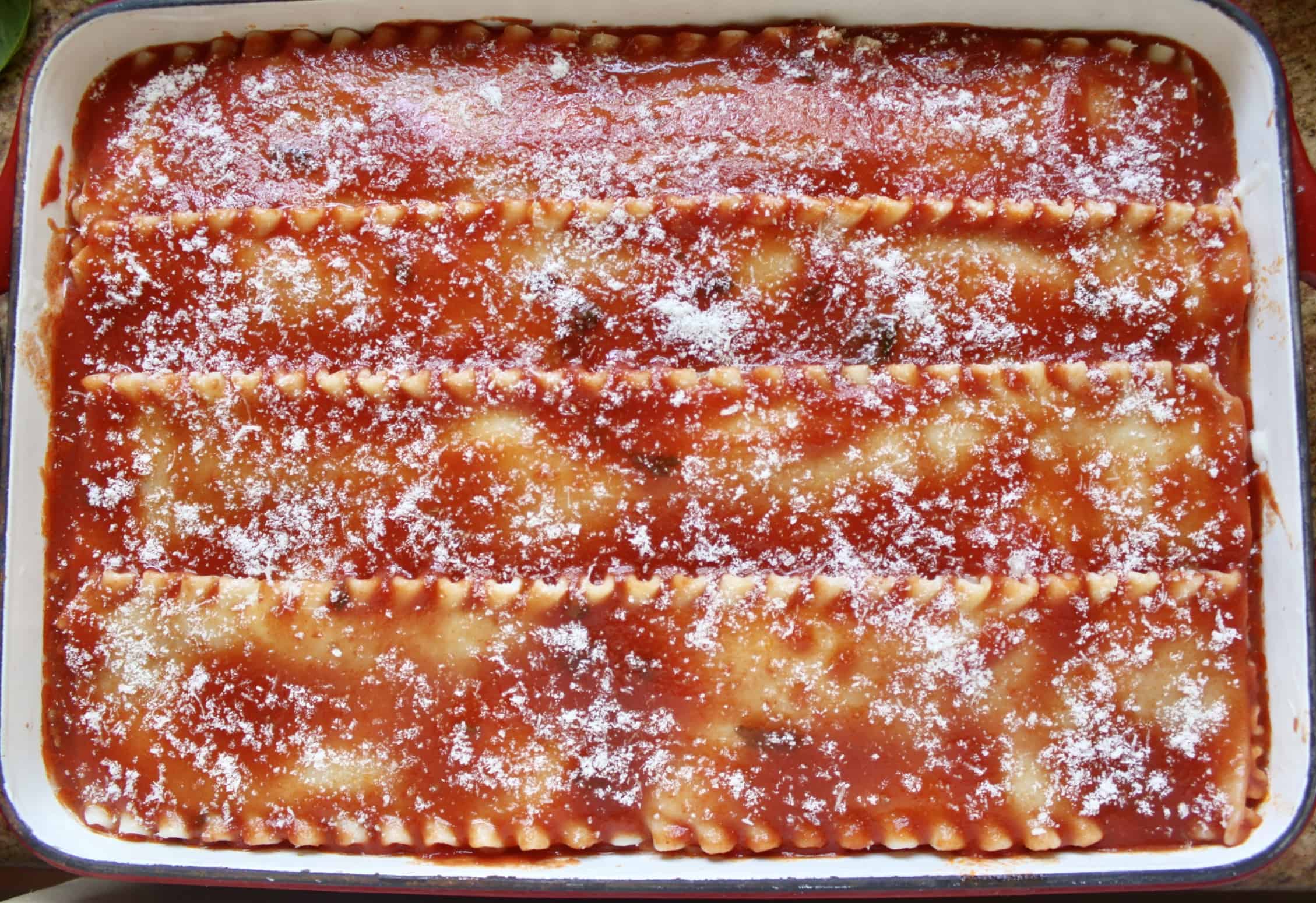
5. Bake the Lasagna
Cover with foil (but make sure the foil doesn’t touch the lasagna as tomatoes will eat through the foil) and put in a preheated 400 F (200 C) degree oven for 20 minutes. Remove the foil and continue to bake for another 10 to 20 minutes, depending on how crispy you want the top.
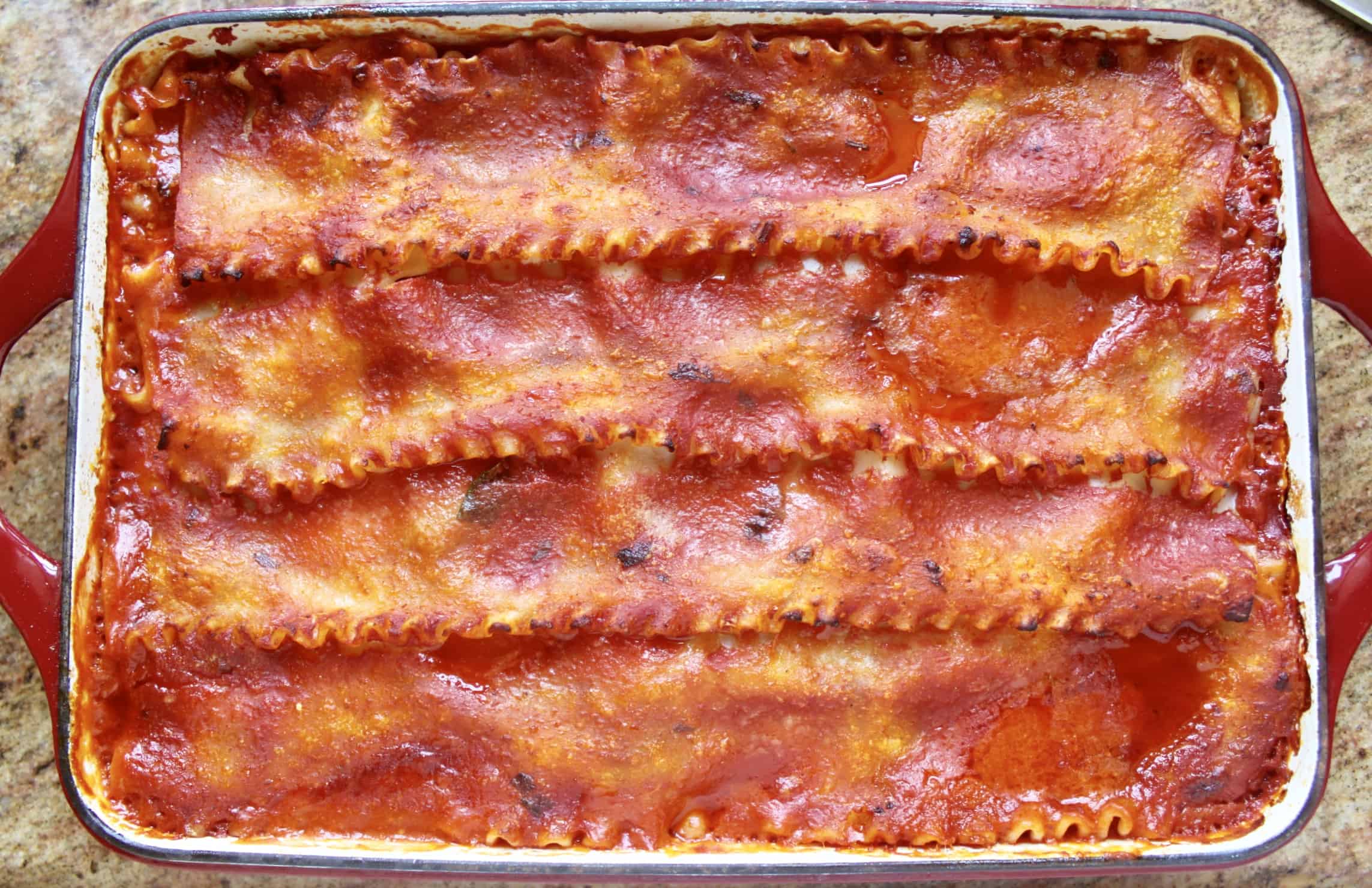
The edges will be bubbly when you remove it from the oven, so be careful. Allow to cool for about 10 minutes before cutting.
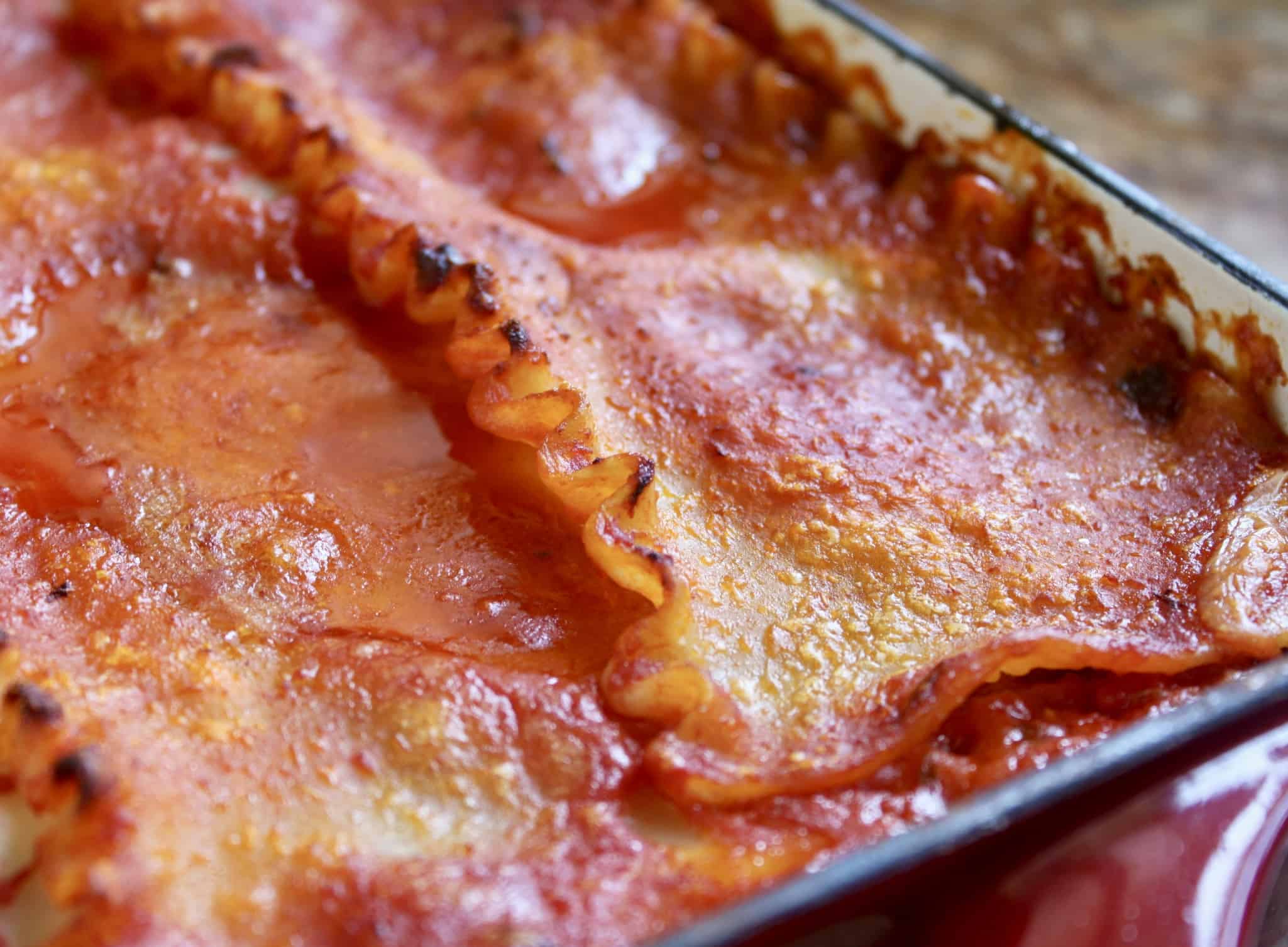
Serve!
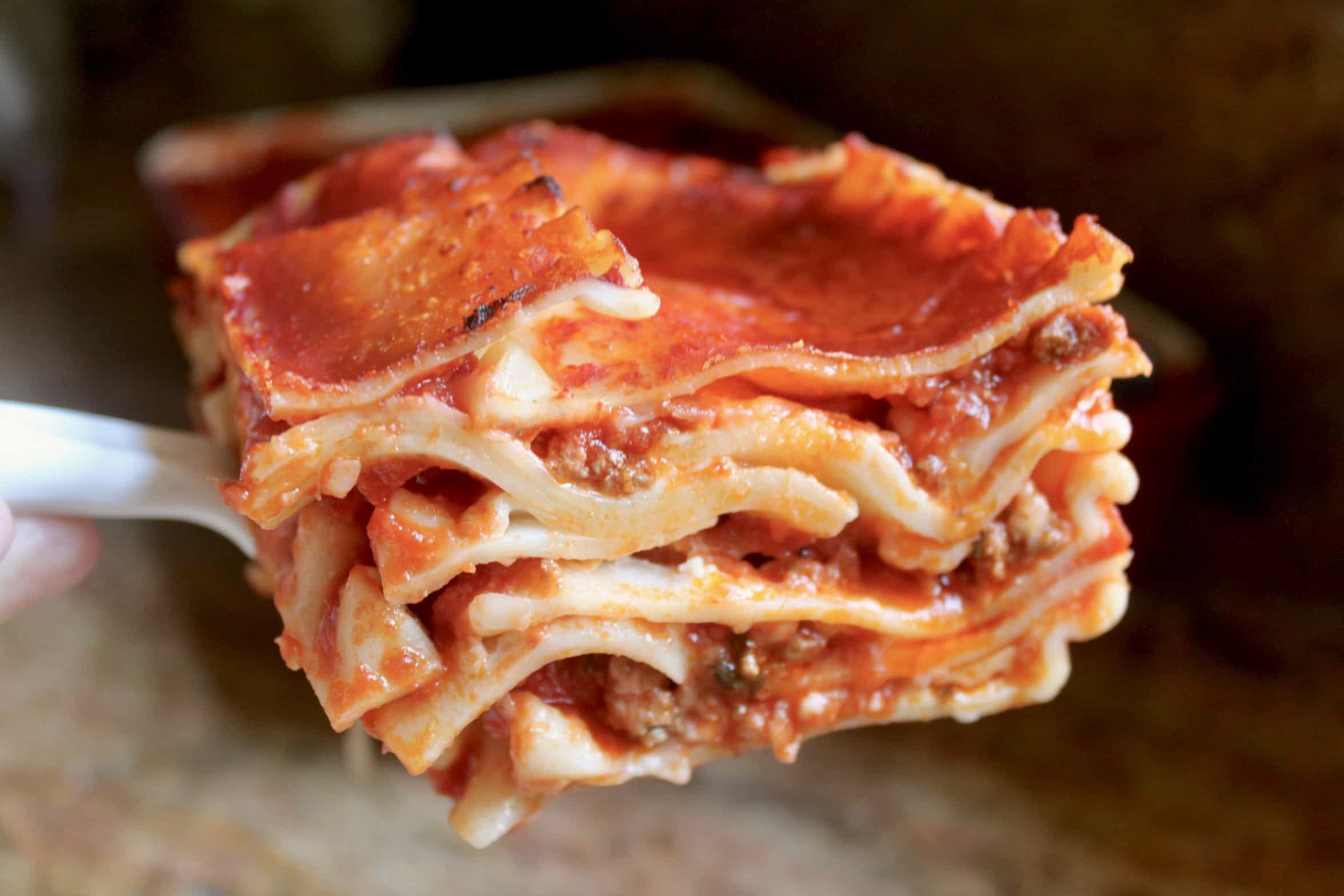
Add a sprig of basil for some color if you like.
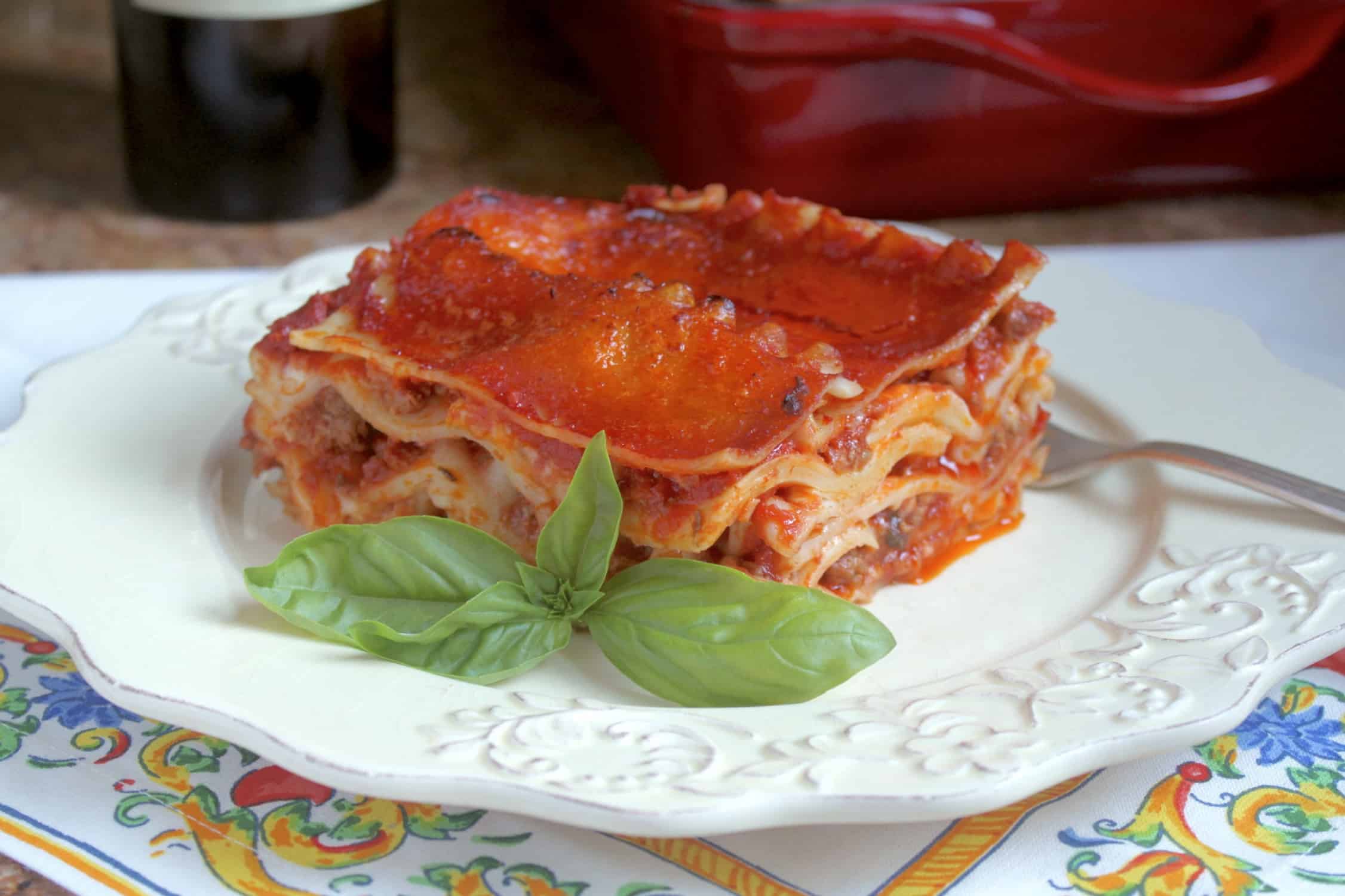
But most of all, enjoy the wonderful flavors of this traditional Italian recipe!
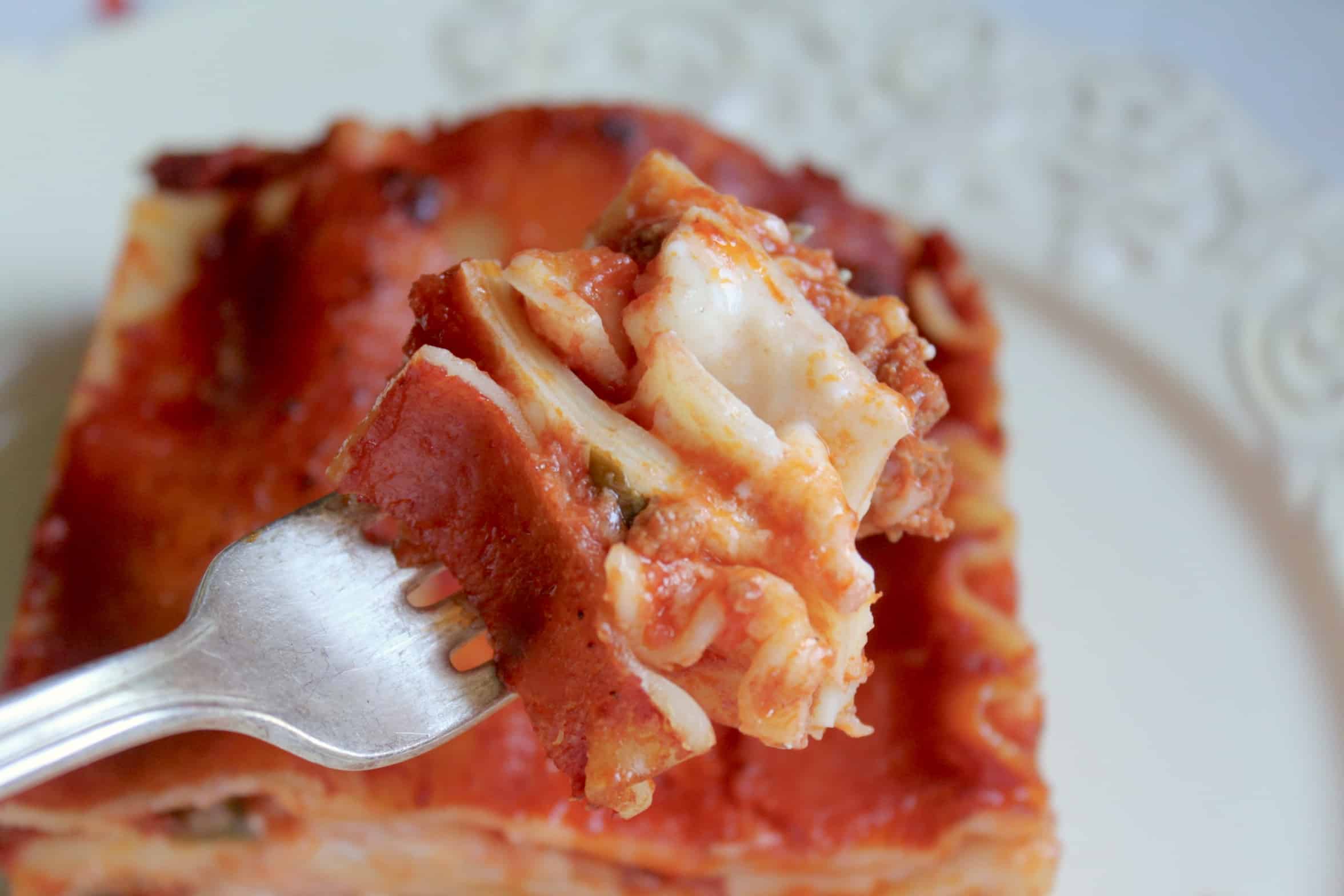
Don’t miss another recipe, sign up for my free subscription.
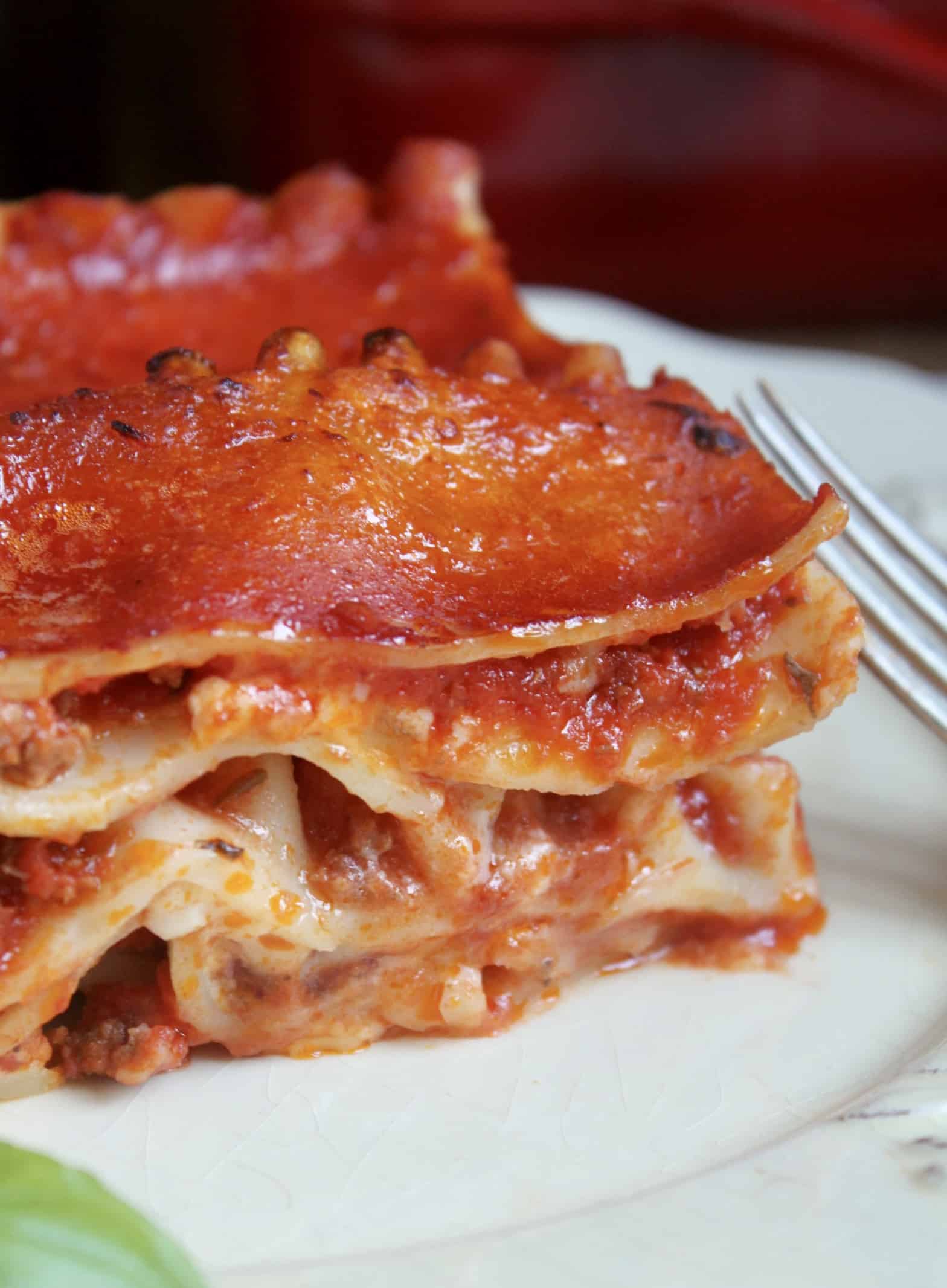
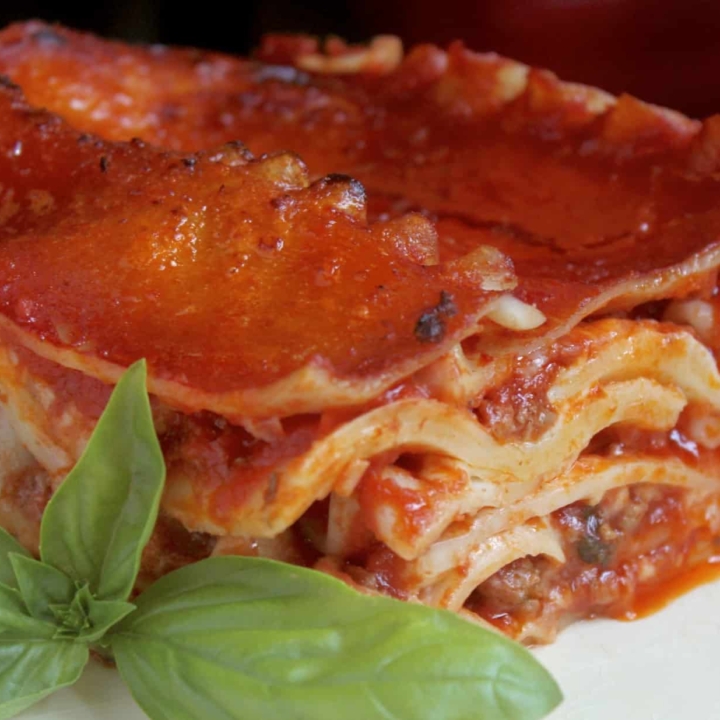
Lasagna (Traditional Italian Recipe)
A traditional Italian lasagna recipe using quality ingredients and no sausage, cottage cheese or sugar.
Ingredients
Meat Sauce
- 4 Tbsp extra virgin olive oil (good quality like Partanna)
- 3 cloves of garlic
- 2 Tbsp chopped fresh parsley
- 1 lb ground beef
- approximately 42 oz Italian tomato purée (passata) See notes.
- 1 tsp sea salt
- pepper
- fresh basil
Bechamel Sauce
- 3 oz butter
- 4 oz flour
- 24 oz milk
- dash of nutmeg
- salt
- white pepper
Other Ingredients
- 1 lb lasagna noodles or sheets
- 10 oz shredded mozzarella cheese
- 2 Tbsp grated Parmigiano Reggiano cheese
Instructions
1. Make the Meat Sauce
- In a large, heavy pot, put the olive oil, garlic and parsley over medium high heat. When the garlic begins to brown, increase the heat and add the ground beef. Break up the beef, but keep it rather chunky. Sprinkle with about 1/2 tsp of salt.
- When the beef is beginning to dry up, add the tomatoes and stir well. Add more salt, then lower the heat and allow to simmer for about an hour, stirring from time to time. Taste for salt and add pepper.
- When the sauce is ready, add the torn basil leaves. Remove about a cup (8 oz) of plain sauce (leave the ground beef in the pot and save for the top layer). Refrigerate the meat sauce when cool, or set aside if using right away.
2. Make the Bechamel Sauce (while the sauce is simmering).
- Melt the butter in a medium pot then add the flour. Keep stirring to cook the flour for at least 5 minutes, but don't let it brown. Pour in a little of the milk, and stir quickly to incorporate.
- Continue stirring and adding milk a little at a time. Once all the milk is mixed into the flour and butter mixture, add more.
- Add more milk each time as the composition gets more sauce-like.
- When all the milk has been added, season with about 1/2 tsp salt, a dash of nutmeg and about 1/4 tsp white pepper. Taste and adjust as needed. Keep a lid on the sauce if not using right away.
3. Cook the Noodles (Skip this step if using no-cook lasagna noodles).
- Boil the noodles in plenty of salted water, making sure to keep moving them so they don't stick together. Remove the noodles from the heat 5 minutes BEFORE the instructed time on the box.
- Reserve about 2 cups of the pasta water. Drain most of the water and then fill the pot with cold water just to cover the noodles. This will stop the pasta from cooking further.
4. Assemble the Lasagna
- Put a thin layer of sauce (no meat) on the very bottom of the 9x13 pan.
- Add three pieces of lasagna lengthwise, then top generously with a quarter of the bechamel sauce.
- Next, dollop on the meat sauce, but don't add so much that the lasagna will only be sauce at the end.
- Sprinkle on about a quarter of the mozzarella.
- Then top with more lasagna sheets, however, this time, cut them to 9" strips so that you can place them in the opposite direction. This gives the lasagna structure so that it can hold together when cut. Cut the pieces so that it covers the bottom layer without leaving too much space.
- Repeat with the bechamel, meat sauce and mozzarella another three times so that there are 5 layers of pasta and 4 layers of filling.
- You may or may not have leftover meat sauce, depending on how much sauce you added. However, if you do use it all, take some of the reserved pasta water (about a cup) and rinse the pot with it and add it to the lasagna before the top layer goes on.
- Alternatively, just pour the water directly onto the lasagna. We didn't fully cook the pasta, so it will absorb more liquid as it cooks in the oven.
- The top of the lasagna will have the strips lengthwise, so I usually pull four (I overlap the top layer) of the best looking pieces (which aren't broken or cut) and save them for the top. Spread some of the tomato sauce without meat pieces for the very top layer.
- Lastly, sprinkle some grated Parmesan on top of the lasagna before baking.
5. Bake the Lasagna (or Freeze at this Point)
- Cover with foil (but make sure the foil doesn't touch the lasagna as tomatoes will eat through the foil) and put in a preheated 400 F (200 C) degree oven for 20 minutes.
- Remove the foil and continue to bake for another 10 to 20 minutes, depending on how crispy you want the top.
- The edges will be bubbly when you remove it from the oven, so be careful. Allow to cool for about 10 minutes before cutting.
FREEZER DIRECTIONS:
- My recommendation is to freeze the lasagna after assembling then defrost and bake as directed.
- If you have leftovers, or choose to freeze after baking, that is a great option, as well. Freezing in individual servings after baking is a marvelous idea, especially for singles or couples.
Notes
- Special equipment: 9"x13" lasagna pan
- Use 100% durum wheat semolina pasta from Italy, or homemade, for best results.
- Use whole milk, low moisture mozzarella, and I recommend shredding your own cheese to avoid additives.
- The very best choice in canned tomatoes is San Marzano dell'Agro Sarnese-Nocerino, DOP) (If using 24 oz jars, you'll need 1 3/4 jars - if using 28 oz cans, use 1 1/2 cans.)
Nutrition Information:
Yield: 12 Serving Size: 1Amount Per Serving: Calories: 416Total Fat: 24gSaturated Fat: 10gTrans Fat: 1gUnsaturated Fat: 11gCholesterol: 70mgSodium: 442mgCarbohydrates: 29gFiber: 3gSugar: 3gProtein: 22g
Nutrition information is only estimated.
Christina’s Cucina is a participant in the Amazon Services LLC Associates Program, an affiliate advertising program designed to provide a means for sites to earn advertising fees by advertising and linking to Amazon.com. As a Farm Foods affiliate I earn from qualifying purchases. I received 2 cans of San Marzano DOP tomatoes from the I 🖤 San Marzano DOP campaign.



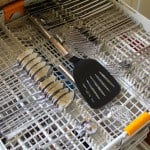
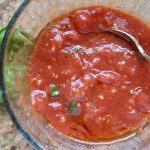

you didn’t mention to spread the tomato sauce on the lop of the last layer of lasagna before adding the Parmesan. Some who do not cook may miss this part because it was not explained to them..
You are absolutely correct, Susanna! Thank you so much for catching that, I really appreciate it. I have edited to add that step in the body of the post and in the recipe card. :) Thanks again! CC
How many fresh basil leaves should I use? I might have missed it but I don’t want to add too many.
Hi Erin, I don’t think you will be able to add too many. The answer is “it depends”. If you have really big leaves of flavorful fresh basil then you could add 3 or 6. If they are small leaves, then a dozen wouldn’t be too much. Don’t stress on the number of basil leaves. When you make the sauce once, you can decide how you like it and then add more or less basil to taste. Let me know what you think! :)
Thank you! My husband ended up doing that part, so I have no idea how many he went with. That said – our whole family loved this recipe! Thank you so much for sharing, it was *SO* good.
I’m delighted! Thanks, Erin! (If you get a chance, if you could click on the 5 stars on the recipe card, I’d appreciate it.)
If I am making homemade noodles right then without drying, do I still need to boil first or can I just let them cook in the sauce?
Yes, it has to be boiled first, just undercook them. Enjoy!
After visiting my family in Italy, and tasting their lasagne, I was determined to make a authentic, traditional lasagne. This is recipe hit the nail on the head – truly authentic and delicious.
I was wondering if you drain the fat from the beef before adding the tomato puree?
To make this vegetarian, do you simply not add the beef?
Thanks!
So happy to hear it, Amanda! If you use a very fatty beef you can, but I use organic, grass fed beef with 10% or less fat so I do not. Yes, you can omit the meat, but there wouldn’t be anything in between the layers and might be too much pasta.
This recipe is fantastic. I have decided that it is my favourite meat sauce. I used home preserved passata and had to use about twice as much as when I canned it originally it was very watery as i never cooked it down– super pink, nearly raw with citric acid to preserve it. My cooking time went from 1 hour to about 4 and it was totally worth it. teh meat was super soft by the end of cooking. I still had a lot of watery liquid left over so i strained the sauce and cooked down the remaining liquid to a thicker consistency then added it back to sauce. Beautiful in the end. Hd about a litre of sauce in the end.
Hi Jess, so glad you liked the lasagna, but I’m not sure about what happened with the liquid and cooking time? Anyway, hopefully it works out better next time!
I don’t understand this instruction – Remove about a cup (8 oz) of plain sauce (leave the ground beef in the pot and save for the top layer). How do you get plain sauce without meat when they have been mixed and cooked together? Really want to use your recipe so look forward to your help.
Hi Christina, I understand how you’re confused if you haven’t made it yet. When you do, you’ll see that when the sauce sits, there’s spots where you can spoon out sauce without any bits of meat. You honestly don’t need too much. Alternatively, you can make a separate sauce, but it’s more work when you don’t need to. Let me know how it goes.
Hi. Thank you for your quick reply. Will probably make it tomorrow so will let you now how I get on.
Hi. Can’t spell my own name!! Made it last night and we all really enjoyed it. Will definitely make again. Many thanks.
Yay! Thank you!
that Lasagna looks amazing!
Thanks, Brian! I’m currently helping my parents move and my husband made it using my recipe!
I’ve been looking for a recipe like this for years (though, to be honest I think I came across this recipe before and dismissed it over the bechamel) that said I have a question about the meat. Personally, I like my meat to be very soft in a sauce. Would I best achieve this ideal by cooking a sauce low and slow or by creating a sort of panade to be mixed with the meat before hand? I’m so perfectionistic, I honestly drive myself crazy and their own no Italian grannies to consult on this matter.
Additionally, and this is more left-field/bonus territory. I used to go this Ma/Pa shop in my city and they had a sort house-made condiment that was olive oil, crushed pepper/pepper seeds and something green and herby, maybe mint and oregano. It was used to give a fresh kick to the lasagna and I’m curious if you’ve come across something like this before and can point me to it? It is not a pesto and I doubt it is aa full-on chimichurri.
Hi Jess, not sure what type of lasagna you are looking for, so it’s hard to say. The best way to get that tender meat is to use the best quality. You could even get a nice piece of meat and grind it yourself. I wouldn’t say I’ve ever had tough meat in my lasagna, so probably cooking it according to my recipe is fine for you.
That sauce doesn’t sound like anything Italian that I’ve heard of, so I can’t help you there. However, I can tell you that I would avoid putting anything like it in this lasagna the first time you make it. Try it as written, THEN make your adaptations. I think you may find that the sauce will overpower the delicate flavor of this lasagna and mint and oregano will make it quite untraditionally un-Italian.
Hope this helps!
CC
oh the condiment I was talking about was not meant to go in the lasagne (that would be terrible) but more or less drizzled over the finished product. it was definitely a family made sauce that seems to have died with its creator when he passed. as far as the soft meat question went, I suppose i used to take short cuts and crush up meatballs to use in a quick meat sauce (those meatballs had bread and milk in them) because I thought the meat was softer without needing to cook for several hours. thanks for the reply.